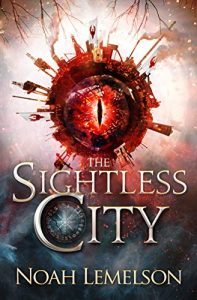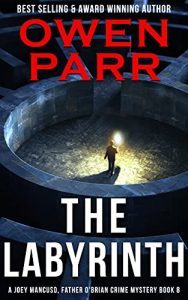Cora Buhlert's Blog, page 38
August 3, 2021
Eternia Revisited – Some Reflections on Master of the Universe: Revelation
Like everybody who was a kid in the early 1980s and had access to US cartoons, I watched the original He-Man and the Masters of the Universe series. Though I was lucky, because the “access to US cartoons” part was not a given in the three TV channel world of 1980s West Germany, where children’s programming had to be wholesome and the likes of He-Man or indeed anything that promised more thrills than Heidi or Maja the Bee (both of which ironically were Japanese takes on European children’s classics) was deemed “violent American trash” and not available, unless you were one of the lucky few to have cable and access to private TV.
Because I lived in a rural area, we did not have private TV at home until February 27, 1989 (and the fact that I can still tell you the exact date more than thirty years later should tell you what a momentous occasion that was). However, my Dad worked in the Netherlands from 1983 to 1989 and had a flat in the centre of Rotterdam (quite literally with a view of Rotterdam’s townhall). And that flat came with cable TV, which meant that during the holidays I could watch all the cartoons on Sky Channel courtesy of the DJ Kat Show and Fun Factory. Those shows aired all the good stuff – M.A.S.K., Transformers, Jem, Jayce and the Wheeled Warriors, Ulysses 31, The Care Bears, Bravestar, G.I. Joe, Inspector Gadget, Saber Rider and the Star Sheriffs, The Galaxy Rangers, Blackstar, G.I. Joe, both versions of Ghostbusters and yes, the original He-Man and She-Ra. And I watched it all and loved that stuff – except for Roger Ramjet, whom I hated with a passion and phantasised about throwing into the canal outside the apartment.
At the time, He-Man and the Masters of the Universe was not my favourite. I preferred his sister She-Ra and if you’d asked me for my favourite cartoon of them all, it would have been either Jem or M.A.S.K. (before M.A.S.K. fell from grace due to a character doing something that deeply disturbed me) as well as the Japanese Candy, Candy anime (which aired on Belgian TV at around the same time, so I always get it mixed up with the others) and Defenders of the Earth, the joy of which I could share with my parents who knew the characters from their newspaper comic adventures. That said, I remember He-Man fondly, because He-Man was very much ubiquitous, simply because there were so many more He-Man episodes than most of the others.
I never had any He-Man toys, nor any of the other cartoon toys, even though my parents would probably have bought them for me, if I’d asked (I did have a sizeable collection of Strawberry Shortcake figurines, after all). But I never asked, because by that point I had internalised that He-Man, She-Ra, Jem, Transformers, M.A.S.K. et al were violent American trash that nice kids were not supposed to enjoy. I don’t even know how I came to internalise this, since my parents never had any problems with me watching the cartoons. I did eventually acquire a Teela action figure as a flea market find in the late 1980s.
Those cartoons were basically 25-minute toy ads and I knew that even as a kid (especially since the commercial breaks helpfully ran ads for the very same toys). Nonetheless, I loved them. They also had a big influence on me – how big I wouldn’t realise until many years later. And I’m far from the only one. Look at how many reboots, reimaginationings, live action versions, etc… of 1980s kid cartoons there have been in recent years. For example, right now Snake Eyes, a pretty neat looking movie based on the ninja character from G.I. Joe, is in the theatres. They may only have been glorified toy commercials, but those cartoons influenced a whole generation and have outlasted many of the more serious and wholesome media of the same era. At any rate, I don’t see a big screen Löwenzahn reboot anywhere. As for wholesome and educational cartoons, how wholsome and educational does Fat Albert and the Cosby Kids look now, knowing what we know about Bill Cosby?
The reason why those glorified toy commercials endured, while other media of the same era faded away is that – as comic creator Jerzy Drozd explains in this YouTube video – they did a lot of things very well. They also had some very talented people working on them, e.g. J. Michael Straczynski got his start writing scripts for He-Man, She-Ra, Jayce and the Wheeled Warriors and others.
Another thing that those cartoons did was serve as a gateway to SFF and its subgenres for many kids of the era. Because a lot of the cartoons of the 1970s and 1980s were based either directly or indirectly on SFF of the pulp era. One of my formational science fiction influences, along with reruns of the original Star Trek and Raumpatrouille Orion as well as Time Tunnel and Space 1999, was the 1978 Captain Future anime, which blew my mind when it aired in West Germany in the early 1980s. Decades later, I found out that the show was a remarkably accurate adaptation of Edmond Hamilton’s Captain Future pulp stories from the 1940s.
For other cartoons, the inspiration was less overt, but still very notable to anybody who’s familiar with the pulp SFF of the 1930s and 1940s. In one episode of the excellent Rogues in the House sword and sorcery podcast, one of the hosts said that his introduction to sword and sorcery was He-Man, followed by Conan the Destroyer. My own experience was very similar. True, I had heard the name Conan by the time the original He-Man cartoon started in 1983, but all I knew about Conan was
a) that he was a barbarian
b) that he was played by Arnold Schwarzenegger who was from Austria originally, and
c) that he was violent American trash that nobody should watch or read
By the late 1980s, I had also picked up that Conan’s creator had committed suicide, based on a 1989 diary entry in which I muse about whether suicide is an occupational hazard for writers and list as examples Ernest Hemingway, “the guy who wrote Chess Novella” (Stefan Zweig) and “the guy who wrote Conan the Barbarian”.
However, my true introduction to sword and sorcery were the sword and sorcery influenced cartoons of the 1980s, followed by various Franco-Belgian-Dutch sword and sorcery comics of the same era. Not only did what eventually became Masters of the Universe originally start out as a Conan toyline, Eternia is also very much a grab bag of sword and sorcery influences. He-Man is basically a Frank Frazetta Conan cover come to animated life and given a dye job (or John Jakes’ Brak the Barbarian with a haircut), while Teela is C.L. Moore’s Jirel of Joiry (a parallel that Masters of the Universe: Revelation makes very clear). Orko is the less capable relative of Sheelba of the Eyeless Face and Ningauble of the Seven Eyes from Fritz Leiber’s Fafhrd and Gray Mouser stories. Mer-Man and his mer-people are Lovecraft’s Deep Ones by another name, the Snake Men literally are the Serpent Men from Robert E. Howard’s Kull stories. There are also various Cthulhu inspired things with tentacles. Skeletor is certainly influenced by Howard villains such as Thoth-Amon and Thulsa Doom, who also affects the skull face look. Scareglow, a glow-in-the-dark Skeletor variant which does appear in Masters of the Universe: Revelation, is borrowed from the Floating Skull, a villain in the Conan story “Red Nails”. Though Eternia also borrows a lot from the related sword and planet genre, since the Eternians do have energy weapons and all sorts of impractical but cool vehicles.
When Masters of the Universe: Revelation was originally announced, I was initially wary, because a lot of the recent reboots and reimaginations of classic 1980s cartoons hadn’t really delivered what attracted me to the originals. The recent She-Ra and the Princesses of Power is a good example. By all accounts, it was a very good cartoon, but the animation style was so offputting to me that I just couldn’t watch it (not that the original animation was actually good). Which is okay, because I’m really not the target audience for those shows anymore and the ones which are the target audience apparently enjoyed the show. The Masters of the Universe: Revelation trailers, on the other hand, looked promising and actually like the He-Man and friends I remembered. And when the reactions to the show were largely positive – aside from the usual aggravated fanboys – I decided to give it a watch.
Warning: Spoilers below!
Masters of the Universe: Revelation is very much a continuation of the original show – 35 years after it went off the air – featuring all the familiar characters and cool but impractical vehicles and even the moral messages, silly humour and groanworthy puns and nonetheless manages to bring something new to the familiar story, including a couple of shocks and surprises.
The biggest surprise is probably that Masters of the Universe: Revelation is actually more Teela’s story than He-Man’s, which is perfectly fine by me, because Teela was always my favourite, though the usual suspects are of course aggravated, because Kevin Smith got girl cooties all over the Masters of the Universe.
The first half season starts out with Teela being finally granted the status of Man-at-Arms for her service to the kingdom of Eternia. Fun fact: When I first watched the original cartoon in the 1980s, I didn’t know what a man-at-arms was and assumed it was simply the name of the character. When I encountered the term in its original meaning some time later, I kept picturing the He-Man character. There’s a big celebration for Teela and everybody is there, including the original Man-at-Arms, who’s also Teela’s adopted Dad, Prince Adam, King Randor and Queen Marlena, Cringer, being terrified as always, and Orko, being inept as always.
But the forces of evil do not sleep and so Skeletor launches yet another attempt to conquer Castle Greyskull, using the fake robot double of He-Man (apparently, the character is called Faker) as well as Evil Lyn and her magic. Skeletor does manage to get into the Castle and hold the Sorceress at bay (though you wonder how she fell for the fake robo He-Man a second time) and inists that he wants something that is buried under Castle Greyskull, namely the orb from which all magic in Eternia flows. The editing is quite clever here, because we do not see Adam at Teela’s party (and indeed, people wonder where he is, suggesting that he’s off heroing), until the fake robo-He-Man is revealed. And since I had forgotten this particular plot point, I was genuinely surprised.
The Sorceress manages to call for help, the good guys show up and a massive battle ensues. In the course of this battle, Skeletor manages to trick He-Man into stabbing him (“You finally figured out how to use that sword”, Skeletor says, a reference to the fact that He-Man never actually used his sword to fight in the original cartoon, 1980s censors being nervous about fighting with sharp pointy things) and thus opening the vault wherein the orb rests. Once the energy in the orb is released, it will destroy all of Eternia and the rest of the universe, unless someone absorbs the energy. He-Man, being his usual heroic self, offers to absorb the energy, by drawing the sword of power and calling on the power of Greyskull, while already in He-Man. He is warned that this could kill him, but – being the hero that he is – does it anyway.
As a result, Eternia is saved for now, but at a terrible cost. The sword of power breaks in two halves and He-Man briefly reverts to Adam (in front of the eyes of Teela, who has no idea that Adam is He-Man) before he and Skeletor are disintegrated. Yes, Masters of the Universe: Revelation seemingly kills off both He-Man and Skeletor – the protagonist and antagonist – at the end of the first episode. This is a true shocker – also see Tor.com reviewer Leah Schnelbach’s reaction – and it’s not going to remain the only one.
The aftermath of this double (triple, if you count Adam and He-Man as two people) death is similarly shocking. King Randor finally learns that his son was He-Man and that he’s also dead in the worst possible way (Marlena, being smarter than her idiotic husband, knew all along). He has a freak out, blames Duncan a.k.a. Man-at-Arms, strips him of his rank, banishes him from the palace and forbids him to return at the threat of execution (because now that the main protector of your kingdom is dead, it’s a really smart move to kick out the other person capable of protecting the realm). Teela, who is both mourning her best friend and also furious that everybody she ever cared for lied to her, takes off her iconic headband and quits. And that, folks, is just the end of episode one.
Now Teela is absolutely justified in being furious. For starters, it never made any sense to me that she didn’t know Adam was He-Man. In the original cartoon, she’d have to be blind not to notice, because He-Man was literally Adam with his clothes off. Masters of the Universe: Revelation handles this better by making Adam the skinny and scrawny kid he’s supposed to be. But nonetheless, Teela was in every single episode of the original He-Man and accompanied He-Man, Orko, Cringer/Battlecat and Man-at-Arms on every single adventure. She’s capable and heroic (unlike Orko and Cringer) and should have been let in on the secret of He-Man’s identity and indeed, there is no reason why she wasn’t, except for the annoying cliché that the love interest never knows secret of the duel identity hero, causing dual identity heroes to be stuck in love triangles with themselves.
The fact that Lois Lane did not know that Clark Kent was Superman for decades is probably the best known example of that trope, but it’s not the only one or the earliest. The earliest example is probably The Scarlet Pimpernel by Baroness Orczy from 1905 (and for all that’s holy, don’t read the original book, because it’s terrible). Zorro, created by Johnston McCulley in 1919 (and here the original novel The Curse of Capistrano is well worth reading) is probably the best known example pre-Superman.
I’ve always hated that trope, even as a kid, because it made no sense to me. Cause why could those dual identity heroes not even trust the woman they supposedly love? Especially since telling the truth would solve so many problems. Sometime in the late 1980s, I came across Frank Miller’s Daredevil run, where Matt Murdock’s love interest Karen Page sells out his secret identity to his sworn enemy Kingpin in exchange for drugs (yes, this really happened and it’s not the worst thing that happened to poor Matt Murdock either) and thought, “Okay, so that’s why all of those superheroes never tell their significant others about their secret identity, because they all know what happened to Daredevil. But still, isn’t that a little far-fetched, cause how high is the likelihood of something like that happening again.”
So in short, there was absolutely no reason not to tell Teela that Adam was He-Man and therefore, her anger is completely understandable. Not to mention that Teela has just lost her best friend and learned that he’s been lying to her for years. So Teela is angry, grieving and traumatised. The rest of the series will follow her as she comes to terms with her trauma. In my Jirel of Joiry reviews, I argued that coming to terms with trauma was a common theme in sword and sorcery. However, it’s not a theme I expected a He-Man cartoon of all things to embrace.
The next episode is set several years later. Teela, now a hardened cynic and sporting a new haircut, is working as a mercenary with her friend, new character Andra. Mercenary is of course a time-honoured profession for any sword and sorcery hero, since sword and sorcery characters tend to be amoral drifters who will do the right thing eventually, but often only by accident. And so Teela and Andra mainly recover stolen magical artefacts. Because after the events at Castle Greyskull, magic is draining from Eternia and magical artefacts are now at a premium. Yes, Adam/He-Man not only got himself killed, he also failed to save Eternia, so his sacrifice was completely useless.
An old woman hires Teela and Andra to recover a magical goblet from Snake Mountain. Andra doesn’t want to go, but Teela has been there before (and promptly has a flashback of breaking into Snake Mountain with He-Man) and agrees to take the job. They find that with Skeletor dead, his old stronghold has been taken over by his former henchman Tri-Clops (the guy with the three rotating eyes), who has decided that magic is the root of all evil and must be eliminated and that technology is the future. Triclops has also founded a weird techno-cult that worships the Holy Motherboard (I bet Kevin Smith was proud of that pun) and turns it followers into cyborgs in a bit of very 1980s body horror. Tri-Clops and his techno-cult will become recurring antagonists for Teela and her friends. This whole magic versus technology subplot is reminiscent of the barbarism versus civilisation theme that runs through Robert E. Howard’s works from Kull via Solomon Kane and Bran Mak Morn to Conan and which also pops up in the correspondence between Howard and H.P. Lovecraft.
After some fighting (and a guest appearance by a Cthulhu-esque tentacle creature, because Cthulhu won’t be left out, if the rest of the gang is here), Teela and Andra manage to recover the magical goblet and are promptly enlisted by the old woman to deliver the goblet to Castle Greyskull, which is about the last place where Teela wants to go, since this is where her trauma occurred. Besides, King Randor has declared Castle Greyskull a forbidden zone, off limit to everybody on the pain of death (King Randor is not just a complete idiot, he’s also way too execution happy. Someone get rid of him and put Marlena in charge). But they’re mercenaries and mercenaries need to eat, so Teela finally agrees.
At Castle Greyskull, Teela and Andra find the Sorceress, aged and near death due to the loss of all magic. The old woman reveals herself to be Evil-Lyn in disguise (not a huge surprise, because Lena Headey’s voice is pretty distinctive). Surpise, Evil-Lyn and the Sorceress are now working together. Of yes, and Eternia and the whole universe is doomed, if the two halves of the sword of power aren’t combined again.
Cringer is there as well, to watch over the Sorceress (yeah, lots of help he’ll be). Cringer is also the one who persuades Teela, who still wants nothing to do with any of this, to take on the quest. Because just like Teela, Cringer is grieving – after all, he lost his best friend, too. Nonetheless, he tells Teela that life goes on and that she must go on the quest, lest Adam’s sacrifice be in vain.
Now a lot of 1980s toy tie-in cartoons had tagged on moral messages at the end, telling kids not to do drugs, skate on thin ice, run away from home or whatever. My kid self hated these messages, because they felt condescending and stupid. That said, He-Man’s moral messages were better than most, because they actually referred to the events in the episode you just watched. Kevin Smith chose to keep the moral messages, but integrates them into the actual plot instead.
The two halves of the sword of power have ended up in the realms of Subternia and Preternia, which are the Eternian equivalents of heaven and hell. So that’s where Teela and friends (i.e. Andra, Evil-Lyn and Beastman who is utterly devoted to Evil-Lyn and protects her) have to go. However, neither of them can reforge the sword of power. Luckily, Teela knows someone who can, so she goes to see her adopted Dad Duncan a.k.a. Man-at-Arms first.
Duncan is older and greyer than he used to be and tries to remain under the radar (after all, King Randor threatened him with execution, if he ever showed up again), though he still finds time to beat up street punks and tangle with Tri-Clops and his techno-cult. Duncan is happy enough to see his estranged daughter, though he doesn’t want to go with her, because he’s adopted more strays in the meantime, namely Roboto, a robot who has Duncan’s skills and memories, and Orko, who’s close to death due to the loss of magic in the world (and still mourning Adam as well).
Roboto is willing to accompany Teela and friends and since he has Duncan’s skills, he can reforge the sword, too. Orko also wants to come along and convinces Teela that he wants just one last adventure in a scene sure to make your eyes misty. Duncan finally agrees to come along as well (and in a nice bit of symbolism, dons his old helmet, which he’s been using as a fruit bowl), but Teela tells him to go to Castle Greyskull instead to protect the Sorceress, because Tri-Clops and his technocult are sure to attack Greyskull eventually and Cringer won’t be much of a help at all.
After some trouble with Mer-Man (whom Evil-Lyn calls a “treacherous trout”), Teela and friends finally reach the gates of Subternia, the land of the dead. The series turns into the Jirel of Joiry story “Black God’s Shadow” at this point with Subternia standing in for the basement of Castle Joiry with its portal to the underworld. The party is quickly separated and subjected to hallucinations which force them to deal with their fears. Roboto, Andra and Beastman fight zombies. Orko and Evil-Lyn end up in Orko’s home dimension of Trolla and bond, when Orko reveals that he was always a disappointment to his family, because he was so inept at using magic.
Meanwhile, Teela finds herself faced with Scareglow, an obscure toy from the original toy line that’s basically a glow-in-the-dark skeletor. George Daniel Lea has a great article about Scareglow and the horror tropes in Masters of the Universe: Revelation at Ginger Nuts of Horror. Scareglow is the ruler of Subternia and feeds on people’s fears. He also forces Teela to confront her fears. Yes, this is basically C.L. Moore’s “Black God’s Shadow” or Fritz Leiber’s “The Price of Pain-Ease” (which also has a magical artefact cut in half) only that the trauma Teela has to overcome is grief and the anger at being lied to and not sexual assault, as with Jirel.
So Teela finds herself fighting an evil version of He-Man, who mocks her and declares that he never cared about her, and then, her old self. Teela eventually taps into the magical powers she has inherited from her biological mother the Sorceress (another thing that everybody has lied to Teela about), powers that terrify her. She defeats Scareglow and recovers the sword.
However, Scareglow isn’t down for long and so he and his minions reappear, just as Teela and her friends are about to pass through the gate that leads from Subternia to Preternia. Orko uses the last of his magical powers to hold off Scareglow long enough so the others can escape and then expires. Yes, they killed Orko, too, the bastards. And yes, I cried, which surprised the heck out of me, because I didn’t particularly like Orko, the blatant comic relief.
In Preternia, they’re met by Adam who – since he was such a great hero in life – wound up in his world’s version of paradise after he died, together with all the other great heroes, where they all hang around and go on pretend hunts through the forest. The other heroes are basically Conan, Imaro (though he calls himself King Greyskull), a rare dark-haired He-Man prototype (explained by Marie Bilodeau at Black Gate) and a previous Sorceress.
Adam and Teela hug, though things are not at all okay between them, and build a gravestone for Orko, though there is no body left to bury. Adam also learns that his death was for nothing in the end, because they did not save the universeAdam also gives Teela the other half of the sword, though he has no idea if they can get back to Eternia.
Roboto reforges the sword, but is destroyed in the process and dies with the final words to Teela that she shall tell father that he made him better than expected, because Roboto is afraid of death and therefore truly human. And yeah, I cried some more – for a character I barely even remembered from the original.
Meanwhile, Imaro – pardon, King Greyskull – tells Adam and Teela that yes, there is a passage from his tower back to Eternia. He also warns Adam that once he goes through the passage, he can’t come back to Preternia. If he dies again, he’ll be just dead. Adam, of course, goes anyway.
And so the whole gang meets up at Castle Greyskull. Cringer is really, really happy to see Adam, as is Duncan. However, the castle is under attack by Tri-Clops and his techno-cult and the attacks are getting more frequent. In the vault under the castle, Adam draws the sword, speaks the magic words (and come on, we all said them out loud, just as we did as kids) and turns into He-Man. The magic begins to flow again and Castle Greyskull and the Sorceress are rejuvenated. All seems to end well, until…
…He-Man is stabbed from behind by Skeletor, who’s not dead but has been hiding in Evil-Lyn’s staff, apparently unbeknowst to her. He-Man reverts to Adam, Skeletor grabs the sword, says the magic words and turns into Super-Skeletor.
Yes, the first half season ends with the bad guy winning and gaining near absolute power, while the still grieving and traumatised Teela has to watch Adam die (or nearly die, since he’s not yet dead) for the second time. As cliffhangers go, this one is a doozy.
I went into Masters of the Universe: Revelation expecting a bit of nostalgic fun. I got that, but I also got a lot more. For starters, I didn’t expect to get misty eyed watching a He-Man cartoon of all things, because US cartoons aren’t supposed to do that. And I even got misty-eyed for characters I didn’t particularly like as a kid.
Unlike the new She-Ra, Masters of the Universe: Revelation is still very recognisable the show we all remember from the 1980s. However, Kevin Smith also digs into the characters in a way that the original show never did nor could. Teela, Cringer, Orko, Duncan, Roboto, Evil-Lyn are all given more character development here than they got in three seasons of the original. And even the moral messages manage to be not annoying, but actually fit into the plot.
Furthermore, Kevin Smith draws on the sword and sorcery origins of Masters of the Universe: Revelation and injects some of the themes common in the genre into the series. We have the cynical hero broken down by life redeeming themselves, we have barbarism versus civilisation recast as technology versus magic and we have the quest to come to terms with one’s trauma, including the literal journey into the underworld that tends to come part and parcel with these sort of quests. In fact, recognising all the influences and motifs was one of the things I enjoyed most about Masters of the Universe: Revelation.
I’m not sure how Masters of the Universe: Revelation will play for the younger fans who never watched the original cartoons and who fell in love with the new She-Ra. I’m also not sure how it will play for the kids who are the actual target audience, since this show is pretty damn dark, darker than kids cartoons usually are, even in our modern era. And yeah, the aggrieved fan boys who can’t stand the fact that there are girl cooties in their favourite childhood cartoon (even though Teela, Evil-Lyn and the Sorceress always were prominent characters) will hate it like they hate everything. But Masters of the Universe: Revelation is a very good take on a beloved cartoon and one which is actually made for those who loved the original as kids. And it’s nice to be the target audience again for once.
Finally – we cna hope, can we? – She-Ra and the Princesses of Power and Masters of the Universe: Revelation may well be the impetus the sword and sorcery genre needs for a large scale revival.
First Monday Free Fiction: Blasters of Forever
 Welcome to the August 2021 edition of First Monday Free Fiction.
Welcome to the August 2021 edition of First Monday Free Fiction.
To recap, inspired by Kristine Kathryn Rusch who posts a free short story every week on her blog, I’ll post a free story on the first Monday of every month. At the end of the month, I’ll take the story down and post another.
I’ve been watching Master of the Universe: Revelation, which prompted me to think about those 1980s cartoons, which were basically just glorified toy commercials and yet had a huge impact on a whole generation of kids. So what better story to share today than Blasters of Forever, which takes the impact such a 1980s toy tie-in cartoon can have on future generations to its logical end.
So follow cartoon screenwriter Simon as he meets the…
Blasters of ForeverThey burst out of the swirling time vortex to a fanfare of electronic music. The Blasters of Forever.
They were remarkable, sensational, awesome. More awesome than the Magnadragons, more awesome Dana Star and the Dynonoids, more awesome even than Ace Thunder and the Ultrasaurs and those had all been pretty damn awesome indeed. The Blasters of Forever, however, were the most awesome thing ever in the world of toy tie-in cartoons.
They were… plastic. Injection moulded ABS, painted in bright Day-Glo colours, studded with iridescent plastic gems and partly coated with metallic paint that was the latest nano-micro-whatever technology, semi-experimental and pretty damn expensive.
They were truly awesome. Or at least they were supposed to be. Because when Simon lifted them one by one out of the box, the big cardboard box labelled “Design Prototypes! No Unauthorized Handling!”, they looked considerably less than awesome. In fact, they looked like cheap junk. Cheap junk made by forced labour in a squalid factory somewhere in the Far East. And Simon was in charge of turning them into the most awesome thing ever, this year’s must-have Christmas toy.
Simon was good at this, good at turning cheap junk into the most fucking awesome thing ever. He’d started out with Billy Galactic and the Magicdogs, a line of stupid stuffed toy dogs that were, well, magic. All right, so they toy dogs weren’t magic at all, though they had voice chips that said things like “Abracadabra” and “Simsalabim” and broke down after roughly five hundred activations. A lively kid could go through those in two weeks.
Everybody had known that the Magicdogs were kind of naff, even the manufacturer. But Simon had come up with a story about magical dogs from outer space, stranded in an earthly dog pound and fighting crime, the sort of petty crime that didn’t freak out the censors, of course. The resulting cartoon, drawn somewhere in the Far East in an assembly line studio that was probably right next to the toy factory and offered only marginally better working conditions, had been a hit. It hadn’t quite catapulted the Magicdogs into the top 5 of Christmas toys, but it had sold more stuffed toy dogs with voice chips than anybody ever expected. Not bad for a toy everyone in the know had expected to tank.
From then on Simon played in the big leagues. The Magnadragons had been next. They were plastic dragons who changed colour when exposed to hot water. The colour-changing thing had been the hottest toy gimmick three years ago. Everyone had been doing it, even Barbie. The story that Simon had come up with was about prehistoric dragons living inside a volcano, trapped by hot magma (he’d initially misread “magna” as “magma” and by the time he realised his mistake, it was too late to change it), only to emerge in our time and fight crime.
Next came Dana Star And The Dynonoids, one of the rare action toy lines aimed at girls. They were cheap plastic dolls with garish neon-coloured hair and some kind of electric light-up action. Once Simon was done with them, Dana Star was a princess from outer space. When her evil twin Dee Dee Star usurped Dana’s throne, Dana fled to Earth with her girl pals the Dynonoids, who just happened to be cyborgs with special powers, since cyborgisation with a teen rite of passage in Dana’s world, just as a nose job for overprivileged girls was in ours. On Earth, they posed as a pop band. And fought crime, of course.
Dana Star And The Dynonoids had been a huge hit, even in the notoriously difficult girls’ action figure market. And Dana’s success had landed Simon his biggest job to date, Ace Thunder and the Ultrasaurs, last year’s must-have Christmas toy. The Ultrasaurs were dinosaurs that could transform into vehicles for reasons best known to themselves. A total Transformers rip-off, but the manufacturer had faith in the product. And they had hired Simon to come up with the story that would sell it to the public. And oh, what a story it was!
There was a palaeontologist (though Simon hadn’t been allowed to use that term — too difficult for the kiddies), the implausibly named Ace Thunder. He had a time machine — didn’t all palaeontologists? — and travelled back in time to study dinosaurs. But the evil Dr. Cyberpunk (Simon was still proud of that little in-joke) also travelled back in time to turn dinosaurs into ruthless cybernetic killing machines, because… well, that’s just what villains did, wasn’t it? Come up with really convoluted and idiotic plans to conquer the world. However, the heroic Ace Thunder saved some dinosaurs from Dr. Cyberpunk’s psychic enslavement and took them back with him to the future, where Ace Thunder and his Ultrasaurs battled Dr Cyberpunk and his Cybersaurs. It was all total bunk, of course, but no one cared about such little matters such as logic and scientific accuracy in what was in essence an extended toy commercial.
Ace Thunder was still selling well and in fact, he and Dr. Cyberpunk both had just returned to the Jurassic age to convert more dinosaurs into Ultra- and Cybersaurs, so the manufacturer could sell even more toys. But that was no longer Simon’s concern. Once the basic background story was in place, his job was done.
Now on to the Blasters of Forever, his mission for this year’s Christmas season. They were obviously time travellers, the silly name suggested as much. Of course, time travel has also featured prominently in Ace Thunder, which might be a problem. But on the other hand, cyborgisation had featured prominently in both Ace Thunder and Dana Star and no one had batted an eyelash at that. Dinosaurs and teen pop stars were sufficiently different, so no one cared that they both happened to be cyborgs.
Next question was, what did the Blasters of Forever actually do? The toys, that was, not the characters. Because whatever stupid feature the toys had — and they were almost all stupid — it had to be incorporated into the storyline. So Simon picked up the prototypes, began to play around with them a little, then thought the better of it. After all, the last thing he wanted to do was accidentally break one of the prototypes while trying to figure out what it could do. And the damn things were always so damn breakable. During his second assignment, he’d dumped one of the Magnadragons into a pot of scalding hot water and permanently messed up the colour changing mechanism into an ugly, mottled grey. And last year, he’d accidentally broken one of the Ultrasaurs halfway through the transformation into a Lamborghini. The manufacturer hadn’t been too angry, at least Simon’s clumsiness had pointed out a fatal design flaw, that might’ve led to lawsuits and kids swallowing things, if not corrected. But it had still been a costly mistake.
So he reached for the documentation that accompanied the prototypes instead. This wasn’t the sort of colourful booklets that accompanied the mass-produced toys. No this was a sheaf of loose papers, badly typed and badly xeroxed. There were design drawings, too, that might have depicted anything from a toy figure to the top secret plans for an underground nuclear facility. And finally patent applications, documenting in excruciating detail what exactly this particular piece of toy innovation could do.
It seemed they’d come up with something new for the Blasters of Forever. They were equipped with little lamps that lit up and a loudspeaker that emitted a ZAP sound. Nothing new there, Dana Star and her Dynanoids had been able to do that two years ago. But what was new about the Blasters of Forever was that the little lamp and the loudspeaker were activated by an infrared signal that was triggered when a kid hit the sensor on the figure’s chest with an infrared toy gun. The toy gun was helpfully included in the shipment as well, on the very bottom of the big cardboard box. It was a wicked looking thing of black and gold plastic that made wicked sounding noises when the trigger was pressed. The infrared mechanism that activated the tiny lamps on the figures was also surprisingly useful for switching the TV on and off — and so much cooler than the regular remote control.
When the toys went into serial production, the enclosed documentation said, every figure would also include a target disc the kids could pin to their closes to play tag with the infrared guns, should they ever get bored shooting at action figures. All of which, Simon had to admit, sounded like a really cool idea. And one that was sure to be controversial with parents, educators and the usual killjoys.
Okay. How to counter them and hopefully pre-empt any criticism they might possibly have? Hmm, shooting at action figures they would probably tolerate, after all they had tolerated it before. But shooting at other kids, even if it was just shooting with glorified remote controls at sensor discs pinned to their clothes? No way. That was glorifying violence, glorifying killing, glorifying war. Unless…
It wasn’t really killing, of course. No, the Blasters of Forever were pacifists. All toy tie-in cartoon characters were, even the bad guys. And when the Blasters of Forever zapped someone with their impressive looking blaster pistols, they didn’t kill them. No, they just… sent them back to the future, whence they all came, to stand trial for their crimes.
Yes, that was it! The Blasters of Forever were future cops, travelling through time to track down criminals hiding out in the distant past to evade the law. Of course, the criminals would be fairly non-violent folks, the sort that never did worse than robbing banks and maybe occasionally indulging in a little kidnapping and blackmail. Nothing so violent and gory that it would wake up the guardians of decency — and how tempted Simon was to at least once tag one of his supervillain groups with that name.
All right, so the basic concept was in place: The Blasters of Forever were a members of a futuristic police force created specifically to bring time travelling criminals to justice. And the criminals would time travel because… the evil Doctor Fate? — nope, DC Comics had dibs on that one — Time? — too boring — Chronos? — Yes, that one sounded good. Okay, so the evil Doctor Chronos, who was evil because he was evil, had built a time portal which allowed all sorts of criminal scum to flee into the past. But the Blasters of Forever had a time portal as well and travelled into the past to track down the minions of Doctor Chronos all over history.
Yes! This one had everything. Time travel, likable heroes on a mission, a dastardly villain who wasn’t too violent, plenty of opportunity for adventure in varied locals, a compelling storyline which incorporated the toys’ functionality and allowed for infinite expansion by adding new characters. Hell, there even was an opportunity for education — always a plus — by having the Blasters meet up with inspirational historical figures in the past. They could meet George Washington, Abraham Lincoln, Martin Luther King, Jesus, Elvis — okay, maybe not the last three. Jesus was taboo, Martin Luther King would upset the racist demographic and Elvis hadn’t been dead long enough yet. Still, the possibilities… they were limitless.
Simon was on fire now, alternately scribbling down notes and hacking away on his state of the art IBM AT compatible. He came up with a detailed background story, names and capsule biographies for the characters, skeleton plots for half a season worth of cartoon episodes and a suitably pompous opening narration. He even got out the MIDI keyboard that was all that remained from his never-was career as a pop star and began composing the theme song, complete with lyrics.
Blasters of Forever — fighting… fading never? Nope, fading made no sense in this context. Fighting, losing never? No, that didn’t scan properly. Fighting, fainting never? Now that was just silly. Fighting, failing never — yes, that was it.
Blasters of Forever — fighting, failing never…
He could see the title sequence in front of his mind’s eye now. A swirling, multicoloured time vortex. Tiny at first, just a ripple, a small eddy. Then getting bigger and bigger as the portal opened like a camera lens. Music, electronic of course, gradually swelling along with the portal. Until the vortex suddenly opened and the Blasters of Forever burst through, while the lyrics kicked in.
Simon could picture it so clearly that the air in the room seemed to ripple, as if the vortex was opening right here inside his office on his wall. It felt so real that the sudden change in pressure made his ears pop and the air rushing through the portal ruffled his hair and stung his skin. He could see it now, too, really see the vortex swirling and twirling in all the colours of an electric Technicolor rainbow. And it was fabulous.
And here they came, the Blasters of Forever, resplendent in their glittery armour, futuristic blaster weapons at their hips. They looked stunning, absolutely stunning. The kids would love them, the manufacturer would love them, everyone would love them and Simon would get filthy rich, so filthy rich that he might even get a proper screenwriting job, writing proper scripts for proper movies and not junk cartoons for kids.
Hell, maybe he’d even get People on a Bridge made, the screenplay he’d been working on these past three years and the best thing he’d ever written.
It was only when the portal popped close and the resulting blast of air hit Simon and hurled him against the far wall of his apartment that he realised there was something wrong. Something was very wrong here.
Sometimes, when he was in the zone, when his neurons were firing on all cylinders, he’d been able to see, really see, the story he was just creating in front of his mind’s eye. Sometimes he could even hear the music. It was just like watching the finished cartoon, only that in the cinema of his mind the animation was never jerky, the colours were never faded, the music was never warbly and tinny. No, in his mind everything always looked brilliant and bright and real. Like he’d been hired to create storylines and theme songs for full-length animated Disney films, not for glorified toy commercials.
But the films in his mind had never looked like this. They had never looked quite so real. He’d never been able to see the characters in three dimensions, had never been able to make out individual strands of stray hair blowing into their masked faces or slight chinks and scratches marring the perfection of their futuristic armour. And the swirling, rainbow coloured vortex effect had never been superimposed on the grey walls of his apartment before. No, this was all too real. Uncannily real.
“Greetings, Simon St. John,” the lead Blaster intoned in a baritone voice, “Greetings to you, one of the greatest artists of all time and inspiration for our exploits.”
That was new as well. Because before — whenever he’d been able to see his creations in his mind’s eye in glorious full Technicolor animation — they’d never spoken, at least not to him.
“Uhm, what?” Simon stammered, still backed against the wall.
“Our squad commander wishes to present his greetings to you, Simon St. John,” another Blaster said in a distinctly feminine voice. No real surprise there, after all her armour was pink and had boobs. “And explain what a great honour it is to meet the man who inspired us all right here and now, on the eve of your greatest creation.”
Simon said nothing. He just stared at the Blasters of Forever as they stood right there in his dingy apartment, their glorious futuristic armour gleaming in the wan light of his desk lamp.
“Matt Infinity,” he finally stammered, pointing at the rightmost Blaster in blue and gold armour, “Amy Extreme, Felicia Galaxy, Nathaniel Blast, Quentin Impossible, Freddy Forever and of course Captain Carl Chronos, brother of the villainous Doctor Chronos.”
He blinked as if that would make them go away. But it didn’t work, for when he opened his eyes, the Blasters were still there, staring at him from behind their infuriatingly impassive mirrored masks.
“You’re not real,” Simon declared, “You can’t be.”
He pressed his hand to his face, hoping that would help.
“It’s finally happened,” he stammered, “I’ve cracked. I’ve gone mad from writing too many shitty toy tie-in cartoons.”
In response, a hand was laid on his should, a hand encased in futuristic armoured gloves.
“I know that this must be a shock to you,” a female voice, soft like chocolate and honey, said, “But please, do not be afraid, Simon St. John. After all, we have come to honour you…”
Since this hallucination was determined not to go away, Simon decided he might as well open his eyes, only to find himself face to faceplate with Felicia Galaxy in her gold and purple armour who was currently in the process of getting all touchy-feely with him. Briefly and entirely inappropriately, Simon found himself wondering if under her mask, this Felicia looked like the one he’d imagined, a striking black woman with cornrows.
Bad, Simon, bad. Thou shalt not imagine getting hot and sweaty and frisky with what is in essence a kid’s toy, albeit a damned sexy one.
“Also, what is a toy tie-in cartoon?” Felicia asked, ruining the moment.
“You,” he said, “You are a toy tie-in cartoon. That is… no, of course you’re not a cartoon. You’re a hallucination.”
“He does seem somewhat confused,” Nathaniel Blast said with a deep baritone voice that was so much better than the cut rate voice actors they normally used.
“Not surprising, since time travel won’t actually be invented for one hundred and thirty-five years yet,” Quentin Impossible countered, “Right now, time travel is only the spark of an idea in the brilliant mind before us.”
“Actually, it was the spark of an idea in the much more brilliant mind of H.G. Wells long before mine, but thanks anyway.”
“I still can’t find any reference for ‘toy tie-in cartoon’ in the Galactopedia,” Matt Infinity mused, as he was punching the keys of his wrist communicator.
Simon threw up his hands. “Okay, okay. I’ll try to explain it to you.”
He picked up the Chronoblaster — the toy version of course and not one of the remarkably real looking weapons worn by the Blasters — and switched on the TV, halfway through an episode of The A-Team.
“Oh fuck, I’m talking to my hallucinations,” Simon mumbled to himself, “That’s got to be bad.”
The Blasters, meanwhile, seemed utterly fascinated by his TV set. “This is a classic twentieth century cathode ray television set,” Quentin Impossible mused, “I’ve only ever seen these in museums and never functional.”
“And that is the dramatisation of the exploits of the legendary A-Team,” Nathaniel Blast added, “I studied their missions and tactics at the Space Force Academy.”
Simon ignored them and popped a tape into the VCR. It contained five episodes worth of Dana Star and her Dynanoids.
“This cartridge contains a magnetic tape for recording audio and video signals,” Quentin Impossible continued, “Most fascinating. Such cartridges are occasionally excavated by landfill archaeologists, but the tape has always decayed so much that the signals cannot be replayed…”
“That’s what I get for making Quentin the professor type,” Simon thought, “Now he’s futuresplaining everyday technology to me.”
He tried to start the tape with the Chronoblaster, but it didn’t react, so he had to reach for the VCR remote instead.
“See? This is a toy tie-in cartoon,” he said and pressed “Play”. Immediately, the theme tune of Dana Star echoed through the apartment.
The Blasters froze and stared at the TV, utterly entranced, as if they had never seen anything like it before. And who knew, maybe they hadn’t?
“It’s Dana Star and her Dynanoids,” Amy Extreme exclaimed, “Oh my God, I love Dana Star. She inspired me to study singing and cybernetics.”
“So you’re a singer and a cyberneticist?” Simon asked her.
“And a fully trained kung fu master,” Amy added with a triumphant grin.
Simon sighed. “Of course you are.” He reached for the sheet with the character bios and scribbled “Too Mary Sue” in the margins next to Amy’s entry.
“This is amazing,” Matt Infinity said and plopped down on the sofa next to Simon, “It’s the original Dana Star series from the twentieth century.”
Felicia settled down on the other side of Simon and snuggled pleasantly close to him. “But I’ve never seen it so crisp and clear.”
“Did you know that those images were drawn by hand, all of them?” Quentin Impossible explained, “They made a separate drawing for every frame of film and then photographed them.”
“Infodumps too much,” Simon scribbled into the margins next to Quentin’s capsule bio.
“That…” Simon pointed at the screen, where Dana Star and the Dynanoids were launching into song. “…is a cartoon. But it’s not a quality cartoon like Looney Tunes or Tom and Jerry or a Disney cartoon.”
“I have seen those,” Nathaniel Blast remarked in his baritone voice, “Stunning artwork, but very dated social attitudes.”
“Not so pompous,” Simon scribbled in the margins beside Nathaniel’s capsule bio.
“But these cartoons, well they’re just advertising, really. They’re supposed to sell toys, nothing more.”
“Toys?” Matt Infinity asked.
“Yes, toys like…” Simon got up and grabbed a Dana Star doll and a random Ultrasaur from a shelf. “…these. For kids.”
“That’s an Ultrasaur,” Matt Infinity exclaimed, “I love the Ultrasaurs. Ace Thunder inspired me to study palaeontology and because I loved Ferrarisaurus so much, I became a race car driver.”
“Too Gary Stu,” Simon scribbled into the margins next to Matt’s capsule bio.
“The condition of these figures is amazing,” Felicia said, “I have seen examples in the museum, of course, but never as well preserved as this.”
“I don’t think I’ve ever seen an original Ultrasaur figurine that was still able to transform,” Quentin Impossible said, “The mechanism is extremely breakable.”
“And ain’t that the truth,” Simon mumbled.
“Guys, guys…” Freddy Forever, the joker of the group, had found the box with the prototypes and held up his plastic counterpart. “It’s us.”
He grabbed the Doctor Chronos figure from the box and began to re-enact a pitched battle between the two of them.
“Please…”
Somehow, Freddy managed to snap off the arm of his plastic counterpart. “Oops.”
“Freddy,” Captain Chronos said sternly.
“…put that down.” Simon sighed. “It’s a prototype and rather delicate.”
How to explain this to the toy company? Cause “Was visited by time travellers from the future, one of whom broke the toy” would look really bad on the damage report.
“That is a prototype figure?” Quentin exclaimed, clearly on the verge of geeking out completely, “Oh my goodness, that must be worth millions of dollars.”
“Not anymore,” Nathaniel said dryly, “Since Freddy just broke it.”
“Hey, don’t look at me”, Freddy exclaimed, “How the hell was I supposed to know they’re this delicate? The one I had as a kid was made of stronger stuff.”
“But how can there be prototypes already, when Simon here only just came up with the idea for the Blasters of Forever tonight?” Felicia wanted to know.
Simon sighed and plopped down between Matt and Felicia again.
“That’s what I’m trying to tell you,” he said, “All this, the Blasters of Forever, Dana Star and her Dynonoids, Ace Thunder and his Ultrasaurs, the Magnadragons, Billy Galactic and the Magicdogs…”
“Generally considered one of your lesser creations,” Quentin remarked, “No offence.”
“None taken,” Simon said, “The Magicdogs were naff.”
“Though still better than People on a Bridge,” Quentin continued, “What the hell was that even supposed to be about?”
“You know about People on a Bridge?” Simon exclaimed, “You mean, it gets made? It really gets made?”
“Well, I like the Magicdogs”, Freddy piped in. He’d found a Magicdog toy on one of Simon’s shelf and pressed the voice button. “Abracadabra”, the Magicdog said.
“It’s functional,” Quentin Impossible exclaimed, “Amazing. I’ve never seen a functioning one before. The voice chip…”
“Please, Quentin,” Felicia interrupted, “No one cares. And anyway, I’d much rather hear what Simon has to say.”
She flipped up her visor and flashed Simon an encouraging smile. And yes, she looked exactly how he had envisioned her, only even more stunning.
“Anyway… ahem… what I was trying to say is that all the cartoons I created, they only exist to sell toys. The toy companies develop a new toy and then they hire me to come up with a story to go with it. That’s my job. I write glorified commercials to sell cheap plastic junk to kids.”
All around him, the Blasters fell silent. And if not for Dana Star and the Dynonoids still wailing away on the TV, you might have heard the proverbial pin drop.
“I’m sorry, okay. I know you think I’m someone special, but I’m not. I’m just a guy who writes crappy toy tie-in cartoons.”
“Inspiration is found in the strangest of places,” Captain Chronos said sagely.
“Pompous arse,” Simon scribbled into the margins of the character sheet, “Fewer platitudes.”
Felicia squeezed his shoulder in sympathy. “In our time, you are considered one of the greatest creative minds of this era.”
Simon flashed her a wry smile. “I guess that means I get a proper screenwriting gig after all.”
“You do, actually,” Captain Chronos confirmed, “Though your early television work is considered your greatest achievement.”
“So this is as good as I’ll get. Gee, thanks.” Simon emitted a heartfelt sigh.
“But the Blasters of Forever and your other works have inspired generations of people,” Felicia said.
“Sorry, but I’m pretty sure they’ll be forgotten two years from now.”
“After the initial five season run of the original series, the Blasters of Forever indeed entered a period of latency,” Quentin intoned, “But then, in 2010, maverick director Christopher Bailey acquired the film rights, because he was a huge fan of the series as a child. The Blasters of Forever movie was an enormous commercial and critical success and spawned three sequels as well as a new TV series…”
“The new series was a big hit with children worldwide,” Felicia continued, “Two of those children, Stella Reyes and Gong Wuying, eventually met during a nostalgia movie night at the MIT, while both were students there.”
“They bonded over their shared love for Blasters of Forever and began to conduct research into the theory of time travel,” Quentin continued, “Their research was continued by others at the Reyes-Gong Institute for Temporal Physics and eventually in 2120, a team led by Samuel Yetunde succeeded in building a functional prototype for a time portal.”
“Without the inspiration of your work, none of this would ever have happened,” Felicia said.
“And none of us would be here,” Nathaniel added.
“And did we mention that we brought back dinosaurs from the past and outfitted them with cyber-implants?” Matt said, “Just like in Ace Thunder and the Ultrasaurs.”
Felicia reached for his hand. “Your work is important, Simon. It’s an inspiration for us all. And that’s why we’re so honoured to meet you.”
Simon felt he ought to say something, anything. But before he could, alarms went off on the suits of all seven Blasters.
“Get ready, people,” Captain Chronos ordered, “Time to do our jobs. Matt and Freddy, guard the door. Nate and Quentin, prepare for extraction. Felicia, protect Simon. Amy with me.”
At once, the Blasters drew their various weapons and took up battle positions. Simon was about to object — after all, there was no telling what Chronoblaster fire might do to his apartment. But before he could, he found himself thrown to the floor with the lovely Felicia landing right on top of him. “Down,” she urged.
A split second later, the apartment door burst open. That is, it didn’t just burst open, it was kicked in by a fellow with a mohawk, an eyepatch and a long rivet-studded coat of black leather, who couldn’t have looked more villainous if the word “villain” had been tattooed on his forehead.
The intruder had a gun, some kind of huge futuristic rifle and he was aiming it right at the spot where Simon had been sitting until a second ago.
The intruder fired, hit the wall and cut a shelf clean in half, sending toy fragments flying in all directions. He reloaded, but before he could fire again, Amy Extreme was there and disarmed him with a well-aimed karate chop.
The intruder staggered backwards and stumbled into Freddy Forever, who grabbed him in a headlock. The intruder shook Freddy off, sending him flying against a filing cabinet. He went for his fallen rifle, but before he could get it, Amy was there again, kicking him in the face.
The intruder was thrown backwards and would have fallen, if Nathaniel and Matt hadn’t grabbed him. Matt twisted the man’s arm behind his back, while Nathaniel attached a disc-shaped device to his chest.
“Snake Cutter, you have been found guilty of countless violations of temporal law,” Captain Chronos intoned, “I herewith sentence you to life imprisonment inside the Deephold Maximum Security Prison.”
“No, no, you can’t,” the intruder — Snake Cutter — cried. He struggled against Matt, but it was to no avail.
Captain Chronos raised his Chronoblaster, which looked just like the one Simon used as a remote control, only that this one wasn’t made of cheap plastic.
“No, please, don’t,” Snake wailed.
Matt and Nathaniel suddenly let go off him and stepped aside. But before Snake had a chance to react, Captain Chronos fired and Snake Cutter just vanished in a puff of glittery light.
“What… what was that?” Simon exclaimed from the floor.
“A time travelling assassin,” Quentin explained.
“A time travelling what?” Simon wanted to know. Felicia rolled off him and helped him to his feet. “What’s going on here?”
“Snake Cutter was sent by Doctor Chronos to assassinate you and thus prevent the formation of the Blasters of Forever,” Quentin explained.
“He wanted to kill me?”
“Don’t worry, he won’t bother you again,” Felicia said.
“No one ever returns from the Deephold,” Nathaniel added.
“Wait a minute, Doctor Chronos is real, too?”
“As children, my twin brother Curt and I were great fans of your programme,” Captain Chronos explained, “Unfortunately, he did not take the same inspiration from it as I.”
“So I inspired a time travelling supervillain, who promptly sends assassins after me,” Simon exclaimed, “Just great. It’s like I’m Sarah Connor in bloody Terminator.”
“Your work has inspired both great courage and great evil,” Captain Chronos intoned, “For there can be no light without shadow.”
“And besides, we caught wind of Doctor Chronos’ dastardly plans and came here to stop Cutter before he could kill you,” Nathaniel said.
“But we came a little earlier, because we wanted to meet you, the man who inspired it all,” Amy added.
“But now we must take our leave,” Captain Chronos said, “Quentin, open the time portal.”
Quentin looked up from the floor, where he had been picking up the character sheets. “Amazing. I have seen this very document in a museum, though half of it was smeared with what appeared to be coffee stains.”
Amy looked over his shoulder. “What’s a Mary Sue?” she wanted to know.
“People,” Captain Chronos warned, “We have another mission and time waits for no man or woman.”
Quentin took something that looked very much like a remote control from a compartment of his suit and pressed a button. At once, a swirling Technicolor time portal opened.
“Farewell, Simon St. John,” Captain Chronos said and shook his hand, “It has been a great honour.”
He stepped through the portal, followed by Matt, Amy, Nathaniel and Freddy who managed to knock over a mug of cold coffee that had miraculously survived the battle earlier. The coffee spilled onto the character sheet.
“Oops, sorry,” Freddy said and jumped into the portal.
Felicia shook her head. “He always does that.” She bent forward to press a quick kiss onto Simon’s lips. “I’m so happy I got to meet you,” she said, “I love your work.”
Lips still tingling from her kiss, Simon watched as she stepped through the portal.
Quentin went last and then the portal closed as if it had never been.
And if not for the state of Simon’s apartment, it all might have been just a dream, a hallucination brought on by too much coffee and too little sleep.
Simon picked up the coffee stained character sheets to throw them away, but then he thought better of it.
“Greatest cartoon ever!” he scribbled in big red letters on top of the sheet.
The End
***
That’s it for this month’s edition of First Monday Free Fiction. Check back next month, when a new free story will be posted.
July 30, 2021
Indie Speculative Fiction of the Month for July 2021

It’s that time of the month again, time for “Indie Speculative Fiction of the Month”.
So what is “Indie Speculative Fiction of the Month”? It’s a round-up of speculative fiction by indie and small press authors newly published this month, though some June books I missed the last time around snuck in as well. The books are arranged in alphabetical order by author. So far, most links only go to Amazon.com, though I may add other retailers for future editions.
Once again, we have new releases covering the whole broad spectrum of speculative fiction. This month, we have urban fantasy, dark fantasy, YA fantasy, science fantasy, paranormal mystery, science fiction mystery, science fiction romance, space opera, military science fiction, post-apocalyptic fiction, dystopian fiction, steampunk, horror, vampires, werewolves, demons, space marines, alien spies, alien parasites, crime-busting witches, crime-busting single moms, washed-up country singers and much more.
Don’t forget that Indie Speculative Fiction of the Month is also crossposted to the Speculative Fiction Showcase, a group blog run by Jessica Rydill and myself, which features new release spotlights, guest posts, interviews and link round-ups regarding all things speculative fiction several times per week.
As always, I know the authors at least vaguely, but I haven’t read all of the books, so Caveat emptor.
And now on to the books without further ado:
 Ariadne, I Love You by J. Ashley-Smith:
Ariadne, I Love You by J. Ashley-Smith:
Jude is dragged out of Alt Country obscurity, out of the dismal loop of booze and sadness baths and the boundless, insatiable loneliness, to scrub up and fly to Australia for a last, desperate comeback tour. Hardly worth getting out of bed for—and he wouldn’t, if it weren’t for Coreen.But Coreen is dead. And, worse than that, she’s married. Jude’s swan-song tour becomes instead a terminal descent, into the sordid past, into the meaning hidden in forgotten songs, into Coreen’s madness diary, there to waken something far worse than her ghost.
 Forgotten Stars by Odette C. Bell:
Forgotten Stars by Odette C. Bell:
A new realm has awoken. A new threat has emerged. So new warriors must take the helm.
Amber is an ordinary ensign whose only claim to fame is throwing toast on the most important soldier on the station. Then everything changes. When she’s lost on an alien world and her true powers awaken, she must keep them secret from the Coalition or pay the price.
But it’ll be hard to keep her secret around the ever-watchful Commander Starsmith. When she draws his eye, he can’t look away. For deep within him, something is arising. Let it sink, and the station might survive. Let it rise, and the Coalition will never be the same again.
 An Uneasy Alliance by Jonathan P. Brazee and J.N. Cheney:
An Uneasy Alliance by Jonathan P. Brazee and J.N. Cheney:
The war is over. Peace has at last descended over the humanity . . . or so it would appear.
The Centaurs may no longer pose a threat, but a new war is on the horizon, though it hides in the shadows of two empires.
Rumors of alien tech have set governments against each other, and with attention focused on defeating the Centaurs, criminal elements have gotten their tentacles firmly entrenched in the very fabric of civilization.
Staff Sergeant Rev Pelletier of the Perseus Union Marine Corps has now been assigned to the Home Guard, the elite unit made up of members from each military force in human space.
A new age is upon us. An age of exploration, treaties, and new enemies. But with tensions rising, can the Home Guard function as a viable, unified force to combat the growing lawlessness throughout the galaxy?
 Vapor Trails by Joshua Dazelle:
Vapor Trails by Joshua Dazelle:
Marine Lieutenant Jacob Brown was on borrowed time, and he knew it.
He was a rogue element, disobeying orders and pursuing mission goals of his own. His Scout Team had been burned, disavowed by his chain of command and the owner of the stolen ship he was flying was after them to get it back. To make matters even more complicated, the man Jacob had stolen the ship from is an infamous outlaw and mercenary named Jason Burke… his father.
Being hunted down by both the United Earth Navy and the mercenary group that called itself Omega Force, Jacob has only one chance to keep his team out of a military prison and bring down the head of the One World terrorist faction that always seemed to be three steps ahead of him… and that was only if his father didn’t catch him first.
 Wicked Magic by Margot de Clerk:
Wicked Magic by Margot de Clerk:
Nathan is a vampire hunter on the cusp of graduation. He’s been training for this his entire life: the moment he qualifies and joins the rest of his family in their noble calling.
If only it were that simple.
His grades are a mess, his social life is a disaster, and what’s worse, his best friend is a witch! Add to that, his vampire uncle is back in town and his crush might just be supernatural too, and you have one big melting pot of potential parental disapproval. Nathan doesn’t think he can take much more, and then the dark mages come to town.
As bodies begin piling up in the streets, Nathan finds himself pulled deeper into political intrigue and a deadly plot that will pit him against his own family. When the girl he likes comes under threat, Nathan races against time to solve the mystery… well aware that with every step he takes, he comes closer to his father exposing all his secrets.
All things must end. Welcome to the final Deathless novel.
The builder Yoggoth has arrived in our Solar System, but his goal is not to conquer our world. He has locked the sun in a Yoggothian Sphere designed to siphon our star of all power.
Earth is hurled into darkness, denied the lifegiving heat of our sun, even as Yoggoth’s fleets move upon our world. Our heroes, led by Blair, Liz, and Isis, must deal with the new winter before they can even hope to oppose them.
In Australia Jordan has used the intervening five years for one purpose. To become a Builder-slaying dino-enhanced death machine. Under Uluru’s tutelage he has mastered combat, and stands ready to face Yoggoth, whatever the cost.
Outnumbered and outmatched Liz leads a desperate assault on Yoggoth’s flagship, where Excalibur’s destiny will finally be realized. If the blade breaks our world will be annihilated. If it holds, then Liz will provide Blair one chance to save everyone.
One desperate gamble to rewrite history
 Atmospheric Pressure 3: Last Breath by Aaron Frale:
Atmospheric Pressure 3: Last Breath by Aaron Frale:
Olson returns to the Union to discover he can breathe the noxious outside air. However, he soon finds out that he isn’t the only one involved in the sinister plan Erik is hatching. Both of the cities that weathered the apocalypse now depend on Olson unraveling what Erik has in store.
Meanwhile, a small community not too far from these cities sees the buildings burning from Erik’s coup of the government. They possess a nuclear warhead from the forgotten world and send a small team to see what is happening.
In the St. Paul Collective, Natalie is pregnant with Olson’s offspring. She finds out that her unborn child is wanted by the people in power for study because of Olson’s natural ability. She will do anything to protect her kid.
Find out how it all plays out in the third and final installment of the Atmospheric Pressure series.
 Sibyl Sue Blue by Rosel George Brown:
Sibyl Sue Blue by Rosel George Brown:
Stop a murder, save two planets!
Who she is: Sibyl Sue Blue, single mom, undercover detective, and damn good at her job.
What she wants: to solve the mysterious benzale murders, prevent more teenage deaths, and maybe find her long-lost husband.
How she’ll get it: seduce a millionaire, catch a ride on his spaceship, and crack the case at the edge of the known galaxy.
A thrilling, ground breaking story of mystery, crime, action and romance!
 Awakening the Gods by Kristin Gleeson:
Awakening the Gods by Kristin Gleeson:
A failed barista, a reclusive blacksmith. Can they avoid the call of the Irish Gods?
Saoirse knows playing traditional music once a week in a local Dublin pub won’t get her a career, but it’s all she’s got, especially after she’s fired from her barista job. But then her father dies and her life is set into a spin, especially when an unknown grandmother comes calling..
Music is Smithy’s one joy that is left to him that has a residue of the magic he lost long ago. Creating things in his forge, tucked away in rural Cork, increasingly reminds him of what he’s lost and why he must resist the requests of the Tuatha De Danann. They want him to join their efforts to battle their biggest nemesis,a powerful god who is threatening the destruction of Eire, the land they hold so dear. But events and gods conspire to bring Saoirse and Smithy to the path that was meant to be. It’s time for the gods to awake and answer the call to defend the land. But answering that call could mean risking death.
A music-filled romantic urban fantasy with a Celtic twist that will delight fans of Charles de Lint.
 Wicked Whispers by Lily Harper Hart:
Wicked Whispers by Lily Harper Hart:
Jack Harker says the honeymoon will never be over, but it’s back to reality for him and his wife Ivy. Unfortunately for them, that means murder is on the menu … and this newest body is dropped in Ivy’s nursery parking lot.
Jack is a mess when he realizes a sniper took out a local woman. Ivy, although shocked because it happened right in front of her eyes, is also intrigued. When the duo starts digging, they find themselves drawn into an ugly underworld that’s happening right under their noses.
Shadow Lake might be a quiet town but it has an ugly side … and apparently there are a group of people looking to profit. The harder Jack and Ivy look, the more ugliness they uncover.
Ivy’s abilities are growing by leaps and bounds but even she can’t fight off a bullet. When her busybody nature makes her a target, it’s going to take everything she has in her arsenal to fight off the inevitable.
Jack loves his wife. Ivy will do whatever it takes to protect her husband. Will one of them have to make the ultimate sacrifice to protect the other in the end?
It’s a hot race to the finish, and Ivy’s magic will have a say in the outcome.
 Galaxy Bound by Vidar Hokstad:
Galaxy Bound by Vidar Hokstad:
The Centauri Gate has opened, and humanity has taken its first steps into the unknown.
When an Earth freighter is destroyed in Centauri space, Zara Ortega and the crew of the Black Rain are sent to investigate, accompanied by an Earth military officer and a Centauri diplomat.
It’s apparent something is wrong, and when they chase down the leads, they end up facing off against heavily armed warships that should not be there.
Soon they are in another desperate race to survive. They seek shelter in a Centauri colony near Proxima. But those following them mount a brutal assault, and they pay a high price to flee.
They need to get word out, or it means war.
 Absolute Unit by Nick Kolakowski:
Absolute Unit by Nick Kolakowski:
Absolute Unit is a dark carnival ride through the underside of the American Dream, where hustlers and parasites fight to survive against gun-toting furries, sarcastic drug kingpins, old ladies who are startlingly good with knives, and angry ex-girlfriends. It’s a hardboiled slice of modern American horror that asks the deepest question of all: Is the human race worth saving?
Bill is a nobody, a health inspector who’s not above taking a few dollars to overlook a restaurant’s mouse problem, and hated by nearly everyone except his long-suffering girlfriend. His nephew, Trent, isn’t much better: sexually and morally confused, he’s probably the worst teenage con artist on the East Coast. But today, these two losers are going to become the most important people in the world.
That’s because Bill and Trent harbor a sentient parasite with a sarcastic sense of humor and a ravenous appetite. As the parasite figures out how to control its new human hosts, the focus of its desires grows from delicious cheeseburgers and beer to something much darker and more dangerous.
The apocalypse might come from within us…
 Great Hexpectations by Amanda M. Lee:
Great Hexpectations by Amanda M. Lee:
Hadley Hunter thought she was getting a grip on the paranormal world she never knew existed until recently. She was wrong. In the shadow of a massive shifter retreat, she finds she knew absolutely nothing.
Her live-in love Galen Blackwood has his hands full with the conference. Not only is his mother pressuring him to make his presence known but it’s also up to him to keep the not-so-friendly factions from going to war. Things only get stickier when a member of the Michigan wolf contingent ends up dead on the docks.
Hadley wants to help Galen, as does his cousin Aric Winters, who has brought his magical mage wife Zoe and their daughter to the island at the behest of his father. Aric prefers distance when it comes to shifter politics but he’s happy to see his cousin, and be introduced to Hadley for the first time.
Because they’re not shifters, Hadley and Zoe are considered outsiders. That allows them to join together to track down a murderer.
Hadley is out of her element but she’s determined to help Galen by any means necessary. Unfortunately for her, the other wolves don’t like it … and decide to make it an issue worth dying for.
A wolf war is brewing and Hadley is at the center of it. Not only that but she’s a target. It’s going to take all of her witchy energy – plus a little help from a new friend – to make it through to the other side.
Somebody else has different plans … and they’re deadly. It might be the wolves warring, but Hadley is the one who might die on the battlefield.
 The Sightless City by Noah Lemelson:
The Sightless City by Noah Lemelson:
Kidnapping.
Enslavement.
Murder.
Those are only the tip of the iceberg when it comes to actions some will take to protect their interests in æther-oil, the coveted substance that fuels the city of Huile.
As both veteran and private investigator, Marcel Talwar knows this firsthand, and he likes to think he’d never participate in such things. However, that naïve idea comes to a crashing end when he takes on a new case that quickly shatters his world view. A trail of evidence points to someone in Marcel’s inner circle who’s using him as a pawn to conduct grisly experiments-experiments that could lead to genocide.
Now, Marcel is more determined than ever to discover who’s pulling the strings to this sinister plot. But the further he gets, the larger the target on his back becomes, and it’s not long before Marcel has to ask himself how much and how many he’s willing to sacrifice to get to the truth.
Hell hath no fury.
Mason Albrecht’s anger issues have finally come to a head, attracting another member of the Seven. The Prince of Wrath reveals his hand, striking at Mason where it hurts the most: his mother. Abaddon possesses Josephine Albrecht’s body, then disappears, taking her with him.
Plunged into despair, Mason and his allies rush to find Abaddon, and a way to stop the Prince of Wrath. How can he destroy the demon hiding inside his mother’s body? Mason must swallow his pride, bare his soul, and beseech old friends and enemies… one of the Seven among them.
An alien spy on the run.
Two human sisters chosen to train as astronavigators.
Their paths are destined to converge.
Psychic sensitives, Holly Moon and her sister Rosie, are chosen as candidates for Warrish training as hyperspace navigators. The sisters are eager to promote humanity’s advance into space. Will they succeed? They must pass a series of rigorous tests and adapt to the alien neuro-implants.
Alien merman, Baswin Kenton Tallis, Second of his Triad, lives on Earth disguised as a human. When Earth agents discover the secret identity of his older brother, Baswin must flee to the Warrish embassy in the Pacific Ocean.
Holly and Baswin are swept together on an island in the Pacific Ocean, but their destiny lies farther away and many forces threaten to drive them apart. Can they overcome the obstacles and find a haven?
Follow the adventures of the three brothers of the Flaming Comets Triad in Baswin, Book 5 in Taxyon Space.
 Breaker Marine by James David Victor:
Breaker Marine by James David Victor:
As a reaker, she was destined to live a hard life serving the whims of galactic corporations. As an Earth Alliance Marine, she has a chance to change the balance of power in the galaxy.
Holly Cropper grew up as a Breaker, mining the outer reaches of space. Now, she’s an up-and-coming lieutenant in the Earth Alliance Marines. Her mission: keep the peace and help humanity survive in the endless darkness of space. When a distress call comes in from a large mining vessel, her orderly world gets turned upside down. What starts with a simple pirate takeover turns into a hostile alien invasion. This Breaker Marine and her small team might be the only thing standing between humanity and annihilation at the hands of ancient aliens.
Breaker Marine is the first book in the Star Breaker series. If you like fast-paced space adventures with interesting characters who battle aliens, evil corporations, and space pirates, Holly Cropper and her team of Marines are ready to share their epic adventure with you.
July 29, 2021
Indie Crime Fiction of the Month for July 2021

Welcome to the latest edition of “Indie Crime Fiction of the Month”.
So what is “Indie Crime Fiction of the Month”? It’s a round-up of crime fiction by indie authors newly published this month, though some June books I missed the last time around snuck in as well. The books are arranged in alphabetical order by author. So far, most links only go to Amazon.com, though I may add other retailers for future editions.
Our new releases cover the broad spectrum of crime fiction. We have hardboiled mysteries, cozy mysteries, historical mysteries, retro mysteries, Jazz Age mysteries, 1960s mysteries, humorous mysteries, paranormal mysteries, science fiction mysteries, steampunk mysteries, crime thrillers, legal thrillers, horror thrillers, police procedurals, police officers, private investigators, amateur sleuths, lawyers, burglars, assassins, FBI agents, organised crime, serial killers, murdered wives, crime-busting witches, crime-busting socialites, crime-busting realtors, crime-busting single moms, murder and mayhem in Bloomington, Indiana, New York City, San Francisco, Hawaii, London, outer space and much more.
Don’t forget that Indie Crime Fiction of the Month is also crossposted to the Indie Crime Scene, a group blog which features new release spotlights, guest posts, interviews and link round-ups regarding all things crime fiction several times per week.
As always, I know the authors at least vaguely, but I haven’t read all of the books, so Caveat emptor.
And now on to the books without further ado:
 The Glass Alibi by John Burns:
The Glass Alibi by John Burns:
There is no mystery on this journey to hell. You are witness the to the crimes dealing the death sentences, each justified by liberal application of the seven deadly sins.
Enter the glamorous but insidious world of San Francisco’s ultra-wealthy socialites and dive into an immersing character study, filled with envy, greed, and cold blooded murder.
Sinister • Hard Boiled • Relentlessly Paced • Savagely Funny
 Stealing Murder by Beth Byers:
Stealing Murder by Beth Byers:
April 1961
Cat Clarke tends towards the naughty. You know…a little vengeful pickpocketing. A smidgeon of well-aimed fraud. A dabbling of burglary from the deserving.
She’s a woman with her eye on the prize, and with her unexpected team, she might have planned her greatest heist yet. Only while she’s in the act of cutting the painting from the frame, she hears a murder.
If Cat doesn’t catch the killer first, the feds may never stop chasing her. Time for her team to accomplish their greatest feat yet: find the killer, leave him gift-wrapped for the feds, and disappear into the night.
Book ONE in the Cat Clarke 1960s Adventures. It’s time for a new adventure, and you’re going to love Cat Clarke and her family.
One-time orphans turned family, Cat might be fiendish, but her mother, Louisa, is all-good. Then there is the pragmatic Albert and the loyal Thea. This family sticks together no matter what hijinks Cat drags them into. Prepare yourself for a series of mysteries and heists and grab onto something, because it isn’t just her family that Cat will charm.
 The Unexpected Flavor of Forever by Beth Byers:
The Unexpected Flavor of Forever by Beth Byers:
Severine and friends have arrived in a new village once again, and they’re ready for nothing more than a place to call home. With large forests to walk in, a beach to stroll by, locals who are friendly, it is everything that they could have ever wanted.
On one of Severine’s long walks, however, she stumbles over a grisly scene. Now it’s up to her friends to clear her name before their chance of a home that fits them perfectly is ruined.
 Dead For Good by Stacy Claflin and Nolon King:
Dead For Good by Stacy Claflin and Nolon King:
When your only alibi is a dead man, you don’t have much of a defense.
Brad Morris likes to think of himself as one of the best: an assassin at the top of his game. For years, he’s juggled work and family — attentive husband and loving father by day, cold-blooded killer by night.
But when the charismatic neighbor that Brad openly despises turns up dead on the same night he was out on a hit, Brad suddenly finds himself a prime suspect. His wife lies to the police but her lie only lands him deeper in trouble, and it’s clear she thinks he might be guilty too.
Brad’s being framed and he knows it, but it’s nearly impossible for him to prove his innocence without admitting he’s an assassin.
Can he catch the killer without endangering his family — or blowing his own cover?
The police are after…the police. An outsider is needed to hunt down the bad ones. Call up Thaddeus Murfee.
Thaddeus Murfee gets the call from the Los Angeles District Attorney, a crime-buster nicknamed RICO Rocky. There’s a ring of police on the take…and worse. The DA is known for his RICO criminal cases, RICO for Racketeer Influenced Criminal Organizations. RICO Rocky enlists Thaddeus to file a RICO indictment and take them down. Only problem is, it’s going to be very dangerous. Will be necessary to go undercover. Yes, bring your investigator, Marcel. He’ll need to go undercover, too. Thaddeus takes on the assignment. Can he take down the bad apples? Or, will he find that it isn’t the police who are dirty, but the District Attorney’s Office itself?
War breaks out: a battle of psychology, lawyers, and of dark deeds. And a hanging.
US Marshal Jack Dillon, assigned to An Garda Síochána, Special Branch is just about to settle into an enjoyable evening with his neighbor Tara when his phone rings. Against his better judgment, he answers… Good thing he does. It’s his boss, Detective Chief Inspector McCabe. There’s been a shooting in Dublin and it’s all hands on deck. Turns out two police officers have been murdered. US Marshal Jack Dillon and Detective Inspector Paddy Suel begin an investigation that seems to be going nowhere— and yet… It’s bad enough two officers have been murdered, but apparently, that’s just the beginning. The bodies begin to pile up and Dillon and Suel can’t seem to get ahead of the game or find out who is responsible.
The Jack Dillon Dublin Tales series is written by Mike Faricy and was originally released under the pseudonym, Patrick Emmett. Faricy also writes The award-winning Dev Haskell series, the award-winning Corridor Man series, and the Hotshot series.
A city in fear. A serial killer who crossed the line.
The Nursery Rhyme Killer took his brother. Now Owen Day will stop at absolutely nothing to find him.
A brutal killer haunts the streets of Kennington, leaving dead bodies in his wake – dead bodies, gruesome murder scenes, and nursery rhymes. The media dubs him NRK, the Nursery Rhyme Killer.
When NRK targets his brother, ex-military intelligence analyst Owen Day taps into the skills he developed in the Army to bring the killer to justice – before he strikes again.
‘He that is without sin, let him first cast a stone…’
Owen’s own hands are far from clean. But to wrest the city from the death grip of a madman, Owen will need to confront the demons of his past.
Sometimes, a man with blood on his hands is the only one who can stop a killer.
 Sibyl Sue Blue by Rosel George Brown:
Sibyl Sue Blue by Rosel George Brown:
Stop a murder, save two planets!
Who she is: Sibyl Sue Blue, single mom, undercover detective, and damn good at her job.
What she wants: to solve the mysterious benzale murders, prevent more teenage deaths, and maybe find her long-lost husband.
How she’ll get it: seduce a millionaire, catch a ride on his spaceship, and crack the case at the edge of the known galaxy.
A thrilling, ground breaking story of mystery, crime, action and romance!
 Wicked Whispers by Lily Harper Hart:
Wicked Whispers by Lily Harper Hart:
Jack Harker says the honeymoon will never be over, but it’s back to reality for him and his wife Ivy. Unfortunately for them, that means murder is on the menu … and this newest body is dropped in Ivy’s nursery parking lot.
Jack is a mess when he realizes a sniper took out a local woman. Ivy, although shocked because it happened right in front of her eyes, is also intrigued. When the duo starts digging, they find themselves drawn into an ugly underworld that’s happening right under their noses.
Shadow Lake might be a quiet town but it has an ugly side … and apparently there are a group of people looking to profit. The harder Jack and Ivy look, the more ugliness they uncover.
Ivy’s abilities are growing by leaps and bounds but even she can’t fight off a bullet. When her busybody nature makes her a target, it’s going to take everything she has in her arsenal to fight off the inevitable.
Jack loves his wife. Ivy will do whatever it takes to protect her husband. Will one of them have to make the ultimate sacrifice to protect the other in the end?
It’s a hot race to the finish, and Ivy’s magic will have a say in the outcome.
 Beach Front Hunt by CeeCee James:
Beach Front Hunt by CeeCee James:
Life is good for Stella O’Neil. She’s found her mother at last and is finally getting a chance to get to know her after 20 years apart. She’s also just landed the listing of a lifetime!
Trouble always seems to find Stella though and this time it feels personal. When she goes with her client to visit the beautiful remote mansion, her client is brutally murdered. No one else is around for miles. Stella becomes the prime suspect. It’s up to Stella to clear her name and find the killer.
She has no clues to follow until files start disappearing from her computer. Soon a threat follows. Stella is sure if she can find the person responsible, the hacker can lead her to the killer. But she doesn’t have much time until she herself is arrested and tried- will she go to prison after her mother was just released?
 Absolute Unit by Nick Kolakowski:
Absolute Unit by Nick Kolakowski:
Absolute Unit is a dark carnival ride through the underside of the American Dream, where hustlers and parasites fight to survive against gun-toting furries, sarcastic drug kingpins, old ladies who are startlingly good with knives, and angry ex-girlfriends. It’s a hardboiled slice of modern American horror that asks the deepest question of all: Is the human race worth saving?
Bill is a nobody, a health inspector who’s not above taking a few dollars to overlook a restaurant’s mouse problem, and hated by nearly everyone except his long-suffering girlfriend. His nephew, Trent, isn’t much better: sexually and morally confused, he’s probably the worst teenage con artist on the East Coast. But today, these two losers are going to become the most important people in the world.
That’s because Bill and Trent harbor a sentient parasite with a sarcastic sense of humor and a ravenous appetite. As the parasite figures out how to control its new human hosts, the focus of its desires grows from delicious cheeseburgers and beer to something much darker and more dangerous.
The apocalypse might come from within us…
 Great Hexpectations by Amanda M. Lee:
Great Hexpectations by Amanda M. Lee:
Hadley Hunter thought she was getting a grip on the paranormal world she never knew existed until recently. She was wrong. In the shadow of a massive shifter retreat, she finds she knew absolutely nothing.
Her live-in love Galen Blackwood has his hands full with the conference. Not only is his mother pressuring him to make his presence known but it’s also up to him to keep the not-so-friendly factions from going to war. Things only get stickier when a member of the Michigan wolf contingent ends up dead on the docks.
Hadley wants to help Galen, as does his cousin Aric Winters, who has brought his magical mage wife Zoe and their daughter to the island at the behest of his father. Aric prefers distance when it comes to shifter politics but he’s happy to see his cousin, and be introduced to Hadley for the first time.
Because they’re not shifters, Hadley and Zoe are considered outsiders. That allows them to join together to track down a murderer.
Hadley is out of her element but she’s determined to help Galen by any means necessary. Unfortunately for her, the other wolves don’t like it … and decide to make it an issue worth dying for.
A wolf war is brewing and Hadley is at the center of it. Not only that but she’s a target. It’s going to take all of her witchy energy – plus a little help from a new friend – to make it through to the other side.
Somebody else has different plans … and they’re deadly. It might be the wolves warring, but Hadley is the one who might die on the battlefield.
 The Sightless City by Noah Lemelson:
The Sightless City by Noah Lemelson:
Kidnapping.
Enslavement.
Murder.
Those are only the tip of the iceberg when it comes to actions some will take to protect their interests in æther-oil, the coveted substance that fuels the city of Huile.
As both veteran and private investigator, Marcel Talwar knows this firsthand, and he likes to think he’d never participate in such things. However, that naïve idea comes to a crashing end when he takes on a new case that quickly shatters his world view. A trail of evidence points to someone in Marcel’s inner circle who’s using him as a pawn to conduct grisly experiments-experiments that could lead to genocide.
Now, Marcel is more determined than ever to discover who’s pulling the strings to this sinister plot. But the further he gets, the larger the target on his back becomes, and it’s not long before Marcel has to ask himself how much and how many he’s willing to sacrifice to get to the truth.
 Killer Surprise by Sonia Parin:
Killer Surprise by Sonia Parin:
After several delays, postponements and reschedules, Eve’s parents are finally coming for a belated Christmas lunch and Eve is determined to give them a perfect Christmas feast. Everything is set for the family reunion at Eve’s Seabreeze Inn and she has everyone organized. Or, so she thinks.
When Detective Jack Bradford knocks on her door, Eve immediately goes into denial. There’s been a death on the island and she might be indirectly involved. Despite her reluctance to snoop around, Jack trusts her instincts. The more she learns, the more she realizes the truth could be staring her in the face.
SHE WAS THE PERFECT WIFE…
SO WHO KILLED HER?
The widower says his wife was killed by gangs— but now he’s running for Mayor of New York City. Just to be sure (or else to portray himself as a properly mourning husband), he hires P.I.s Joey Mancuso and Father Dom to solve the murder. Only they can’t help noticing he’s pushing them to come to the gang conclusion as well. Hey, is something fishy here?
Joey Mancuso, his priest half-brother–Father Dom–and their crack team have got their work cut out for them. A year ago, a Brooklyn politician’s wife was brutally murdered, seemingly in a terrible burglary gone wrong. But no one really knows: the case remains unsolved. The mourning politician hires Mancuso to solve the cold case–right before announcing his plan to run for mayor of New York City. Oh, and in that same speech, the politician blames his wife’s death on gang violence. And the politician tries to convince Mancuso to come to the same conclusion.
Well….none of the gangs in Brooklyn seem to have it out for the politician’s family. Plus, the politician may have a straying eye–there are rumors of the affair. It’s a labyrinthine puzzle, the kind Joey (forever inspired by his hero, Holmes) delights in. Mancuso and Co. take to their office–which doubles as a bustling, Lower Manhattan cigar bar–and delve into Joey’s strangest mystery yet.
Joey Mancuso’s latest adventure is a gritty tour of a side of Brooklyn that’s rarely seen anymore; any fan of The Wire will find a lot to love in the gripping gang politics. Plus, author Parr weaves in the ritzy drama of upper class New Yorkers, all of whom have sordid secrets…
 The Girl and the Dragon’s Island by A.J. Rivers:
The Girl and the Dragon’s Island by A.J. Rivers:
A lifeless body, brought onto shore by the shifting tides.
A tranquil setting disguising the darkness behind a puzzling death.
While the nature of the world seems undisturbed.
And billions continue living.
There is one that carries with her the memory of the dead.
She has no choice but to replay the very beginning.
A beginning and ending that leads her back to Dragon’s Island…
For FBI Agent Emma Griffin, making the unsettling link among several cases has propelled her forward to finding the elusive truth.
The murder of her ex-boyfriend Greg has haunted her for years and as she spirals closer toward the final answer, she realizes it is more disturbing and painful than she could have ever imagined.
Her investigation brings her deep into what he went through during his disappearance. Forcing her to face questions about moments in her past and her future.
Now, the answers that have plagued her nightmares are finally revealing themselves.
But they just might be ones she never wanted.
Every ending gives birth to a new beginning…
Ring. Ring.
“I’m back.”
 Cold Consequences by David Rohlfing:
Cold Consequences by David Rohlfing:
Deadly Dealings in Bloomington, Illinois
Ashley Cummins, the granddaughter of a powerful judge, is unexpectedly shot while buying drugs from her dealer late one night on a city street. As detective Sasha Frank investigates her murder, all of his possible suspects start showing up dead or missing. Who is behind the killings? As pressure builds on Sasha to solve the case, he uncovers new information that begins to unravel a complicated web of evidence. Will Sasha be able to prove who the killer is and take down the person responsible for the murders?
Cold Consequences is the exciting second book in David Rohlfing’s Detective Sasha Frank Mystery Series, serving as a prequel to Deliberate Duplicity. In this gripping new tale, full of exciting twists and turns, Sasha pursues every lead to find the killer. You won’t be able to put it down until the final thread is unraveled.
She barely escaped a serial killer in the Pacific Northwest—and now, he is hunting her again. Or is he? Ilse Beck, a niche expert in serial killer survivors, has faced many monsters, and seen shocking cases—but this one may be the worst of all.
In this bestselling mystery series, FBI Special Agent Ilse Beck, victim of a traumatic childhood in Germany, moved to the U.S. to become a renowned psychologist specializing in PTSD, and the world’s leading expert in the unique trauma of serial-killer survivors. By studying the psychology of their survivors, Ilse has a unique and unparalleled expertise in the true psychology of serial killers. Ilse never expected, though, to become an FBI agent herself.
Nothing can prepare Ilse for her new patient, a survivor from a near murder by a serial killer. The patient, paranoid, believes she is still being watched by the killer. And when the killer claims a new victim, the FBI needs Ilse’s help to solve it.
This case and this killer, though, strike too close to home for Ilse’s comfort. When she realizes that she herself is being targeted, the trauma of her own past comes full circle.
Can Ilse use her brilliant instincts to enter the mind of this killer and stop him before he strikes again?
And will she save herself?
Most people flee to Hawaii for gorgeous weather, white-sand beaches, and cocktails at sunset. Charlotte Gibson, however, is fleeing for her life after a vengeful mobster leaves a severed finger on her doorstep as a warning. Message very much received.
That’s how Charlotte—Charlie to everyone except her mom— finds herself on Maui with six dollars to her name, living with a mother who can’t stop giving her advice on how to land herself a husband. But when a businessman is murdered and his company offers a reward to whoever finds the killer, Charlie sees an opportunity: with that kind of cash, she could afford her own place and start a new life here away from the people who want her dead. After all, how hard can hunting down a murderer be?
Teaming up with a couple of old ladies with more spunk than Betty White, Charlie is sure she’s on the right track to snag the reward money. However, the infuriating-but-smoldering-hot cop trying to keep her away from his case has other ideas. Throw in a day job at an ice cream shop, corrupt local politicians, and a best friend trying to act as the voice of reason, and Charlie has her work cut out for her.
Will she be able to find the killer, or is Charlie’s time in paradise going to go straight to hell in a handbasket?
July 22, 2021
Listen to Cora rambling on about Isaac Asimov and Foundation at the Stars End Podcast
I’m still busy with this year’s July Short Story Challenge (you can follow along here), so I almost forgot to mention that I’ve been interviewed on the Stars End Podcast, a great new podcast dedicated to the works of Isaac Asimov in general and Foundation in particular. As you may know, I was a huge Isaac Asimov and Foundation fan in my teens and still have a soft spot for the good doctor in spite of all his flaws, so it was a pleasure to geek out with likeminded folks.
I’ll also be interviewing the guys behind Stars End for my Fanzine/Fancast Spotlight soon. We truly have an embarrassment of great SFF related podcasts out there.
You can listen to the episode here. And if you want to watch the trailer for the upcoming Foundation streaming series, you can watch it here. The visuals look great and I think Jared Harris will make an excellent Hari Seldon, though I’m a bit doubtful about the focus on the Emperor (who’s only a strictly peripheral figure in the stories) and the clone dynasty plot, which seems to be taken from Ancillary Justice rather than Foundation. Still, I’ll be watching and reviewing Foundation, when it hits the airwaves in September.
July 15, 2021
Loki Continues “For All Time. Always.”
It’s Wednesday, so here is my take on the final episode of season 1 of Loki. For my takes on previous episodes, go here.
Oh yes, and if you missed my reading yesterday, you can watch a recording on YouTube or listen to an audio recording here.
Warning: Spoilers behind the cut!
When we last met our favourite God(s) of Mischief, Loki and Sylvie had just defeated the smoke monster Alioth and were about to enter the Citadel at the End of Time. Whereas the TVA prefers midcentury modern (design classic alert: towards the end, we catch a glimpse of the seating units Charles and Ray Eames designed for Chicago O’Hare International Airport), the person behind everything goes for the full gothic look, gloomy castle, black marble, Victorian furniture. Now you won’t find two styles of design that are more diametrically opposed to each other than midcentury modern and Victorian gothic. In fact, the actual midcentury designers who created the furniture and equipment the TVA is using explicitly reacted against the ornamentation, gloominess and gothicism of the Victorian era, which they considered “everything that’s wrong with design”. Particularly the heavy wooden desk behind which the person behind everything lounges is something that midcentury modern designers flat out hated. There are extensive rants from self-styles design specialists about how such desks are a waste of space and how only self-aggrandizing people would want such a desk. And no, I have no idea what any of this has to do with Loki, though the contrast certainly is interesting. In general, Loki has the best production design of all the Marvel Disney+ shows.
Inside the gloomy gothic citadel, Sylvie and Loki meet… – no, not the person behind everything, but Miss Minutes, the annoyingly chirpy animated clock. And is it me or did Miss Minutes sound a tad Southern in her latest appearance. Miss Minutes informs Loki and Sylvie that her boss, a person she calls He Who Remains, is impressed with them. Miss Minutes also offers Sylvie and Loki all they’ve ever wanted – beating the Avengers, the throne of Asgard, killing Thanos and getting the Infinity Gauntlet with all six stones for Loki and a lifetime of happy memories for Sylvie. However, it’s pretty obvious that all that is no longer what Loki wants. Meanwhile, Sylvie is too obsessed with her need to avenge herself on the person responsible for destroying her life to even consider the offer. And so, Loki and Sylvie get to meet He Who Remains, who is – as Camestros Felapton points out in his review of the episode – just some guy.
That said, the person behind everything is not just some guy, but Kang the Conqueror, a long time Marvel villain who started out as a Fantastic Four antagonist (and might actually be a descendant of Reed and Sue Richards as well as Doctor Doom), but has fought everybody from the Avengers to Thor during his long career. Kang’s one true love in the comics is none other than Ravonna Renslayer, though that Ravonna is a very different character from the one we met in Loki. In the comics, Kang is a time and dimension hopping villain, though not actually He Who Remains, since He Who Remains is the sole survivor of the previous universe who stuck around in our universe after the Big Bang and decided to keep watch by creating the Time Keepers and the TVA. You could say that He Who Remains is a tragic figure and at least means well, while Kang is just an unrepentant villain. Susana Polo has a handy explanation of Kang and his history at Polygon.
In the comics, Kang was a white dude with a silly costume. In the Marvel Cinematic Universe, Kang is portrayed by Jonathan Majors, who also played Atticus in Lovecraft Country (which also starred Wunmi Mosaku who plays Hunter B-15), though he does wear a variation of the green and purple costume Jack Kirby designed for Kang back in 1964.
Now I have to admit that I wasn’t particularly impressed with Jonathan Majors in Lovecraft Country. He was all right and it’s hardly his fault that Atticus is gradually revealed to be a violent jerk and complicit in war crimes (yes, he was just following orders, but that excuse never saves anybody who does not happen to be on the winning side), but in general, I found the various female characters of Lovecraft Country a lot more interesting than Atticus. However, Jonathan Majors is absolutely brilliant as the deranged and completely insane Kang. Majors just nabbed an Emmy nomination for Lovecraft Country (though he’s unlikely to win, because SFF shows and their stars rarely win Emmys and Majors is up against such critical darlings as This Is Us or The Crown), but I hope he gets one for his turn as Kang as well. And since it appears that we will be seeing a lot more of Kang – in fact, he might even be the next Thanos equivalent for the Avengers to beat several years down the road – I guess we’ll also get to see more of Jonathan Majors chewing the scenery. At The Mary Sue, Kaila Hale-Stern calls Jonathan Majors’ tale on Kang finally a worthy villain for the Marvel Cinematic universe, while Guardian reviewer Andy Welch and AV-Club reviewer Caroline Siede also praise Majors’ performance.
The bulk of the episode is made up of Kang sitting behind his desk – the sort of heavy Victorian desks that would drive midcentury modern designers as insane as Kang – and explaining the plot to Loki and Sylvie. Yes, even though this is the series finale, we get another round of people sitting at desks and talking. Daily Dot reviewer Gavia Baker-Whitelaw also points out that bulk of this episode is basically expostition. And indeed, the only reason that Loki gets away with being basically a show about people sitting at desks and tables and explaining the plot to each other is that it has such an excellent cast that watching these people sit around and talk is still fun.
I’ve pointed out before that the TVA is basically Eternity from Isaac Asimov’s 1955 time travel novel The End of Eternity, which is one of my favourite books of all time. And the fact that Loki is a show about people sitting around and explaining the plot to each other is also a very Asimovian thing (and one you rarely see anywhere these days, because it’s so difficult to do well), because large chunks of Asimov’s science fiction consists of characters sitting around and explaining the plot to each other.
The explanation Kang gives Loki and Sylvie is a variation of the “What is the TVA?” infodump Miss Minutes gave Loki (and us) in the very first episode, only with the Time Keepers switched out for Kang. Once, there was a multiverse with multiple universes existing in parallel. Kang was a scientist sometime in the 31st century, who discovered the existence of parallel universes at around the same time other versions of Kang made the same discovery. The various Kangs visited each other and initially got along, until they hit upon one or more Kangs who wanted to conquer the multiverse and so the multiverse war broke out. The Kang Who Remains managed to tame the power of the smoke monster Alioth and use it to get rid of his alternates. Then Kang created the TVA to make sure that there was only one preordained timeline and that no more multiverses could arise. All this happened aeons ago and through it all Kang sat behind his desk in his citadel at the end of time and waited. Waited for the moment, when Sylvie and Loki finally track him down. In fact, Kang declares, he manipulated Loki and Sylvie and set them on the way to find him. Kang also knows everything that happens and will happen, including everything that Loki and Sylvie do or say, which allows him to avoid Sylvie’s repeated attempts to stab him, since Sylvie is not particularly patient about infodumps.
As for why Kang would manipulate two people who are extremely pissed off and have every reason to hate him to find his secret hideout at the end of time, well, it turns out that Kang is weary of basically running the universe. He wants to retire and thinks that Loki and Sylvie would be the perfect people to replace him as heads of the TVA and continue to preserve the sacred timeline. On the other hand, Loki and Sylvie could also kill him, allow the timeline to branch, multiple universe to reestablish themselves, which will lead to other, nastier versions of Kang popping up and may in the end lead back to the same point where only one Kang is dominant. This Kang has no idea what will happen, because his powers of ominiscience only work up to a certain point and that point has now passed. The timeline is beginning to branch and only Loki and Sylvie can decide the future of the universe or rather multiverse.
Meanwhile, back at the TVA, Ravonna Renslayer is having a very bad day. After all – the TVA, her whole life and purpose, which she tried to preserve by killing a whole lot of people – is a lie. And Miss Minutes is slow to download the files Ravonna requested, probably because she is also at the end of time, offering Loki and Sylvie everything they ever wanted. And when Miss Minutes finally does download the files, she doesn’t download the files Ravonna asked for, but the ones she’ll need. So is Miss Minutes Kang’s tool (and if so, which version of him?) or is she a free agent, an AI which has gained sentience, which rarely leads to good things in the Marvel Universe?
Before Ravonna can take off to parts unknown, Mobius reappears, very much not dead, to confront her. Ravonna isn’t particularly shocked to see him, in fact, she seems quite pleased that he survived the void, which further suggests that Ravonna and Mobius are more than just colleagues.
Their confrontation is fairly brief. Basically, Ravonna wants to preserve the TVA, even if it is a lie, because she feels that the end justifies the means. Whereas Mobius believes that the sacred timeline is not worth sending innocent people to the void to die en masse nor to kidnap and brainwash people into working for the TVA. Ravonna calls for back-up, but Hunter B-15 is busily luring her former comrades to a high school in Fremont, Ohio, in 2018, where Ravonna’s pre-TVA self is a teacher. This is also where Ravonna’s cherished pen, the one link to her true identity, comes from.
Mobius’ attempt to physically stop Ravonna from escaping fails, because Ravonna used to be a hunter, while Mobius always was an analyst, so she knocks him down and escapes through a time portal to hell knows where or when. I strongly suspect we will see her again.
Meanwhile, back in the Citadel at the End of Time, Sylvie and Loki are debating what to do. That is, Sylvie is perfectly sure what she wants to do, namely kill Kang. Loki is not so sure. Kang might be lying, but if he’s telling the truth, they might be unleashing something that’s a lot worse than this version of Kang, the TVA or the sacred timeline. It’s a clash of chaos versus order, free will versus predetermination. This disagreement leads to a very well choreographed sword fight, but then Tom Hiddleston is a Shakespearian actor and knows how to fence. Meanwhile, Jonathan Majors gives the best performance of “the villain gleefully watches as other people fight each other” since Ian McDiarmid as Emperor Palpatine all the way back in Return of the Jedi.
Loki begs Sylvie to at least think it over, before making any rash decisions, but she won’t have any of it and accuses Loki of lying and of just wanting to rule Asgard and the universe, even though it’s quite obvious to anybody except Sylvie that Loki doesn’t really want any of that anymore. In the end, Loki – with Sylvie’s blade at his throat – confesses that he doesn’t the thone or the infinity stones or to rule anything, he just wants her to be okay. Sylvie finally does what Loki (and the audience) have been waiting for since episode 4 at the very least. She kisses Loki, complete with a Michael Ballhaus type circling camera. Then she says, “But I’m not,” and pushes Loki through a time portal back to the TVA. Then she stabs Kang, who tells her with his dying breath that she’ll be seeing a lot more of him.
Back at the TVA, the timeline branch alarms keep going off, as the sacred timeline is branching all over. Mobius and Hunter B-15 watch, unsure if they should do anything or if they ever can. Loki, who’s back at the interrogation room at the TVA where Mobius brought him, picks himself up and takes off to warn Mobius and B-15 that they may have made a terrible mistake and that they will soon be dealing with multiple versions of a very dangerous man.
But Mobius and B-15 just stare at Loki in utter confusion. “Who are you? What department do you work for?” they ask. Turns out that they no longer recognise Loki. Worse, when Loki looks out of the window at the atrium of the TVA/the Atlanta Marriott Marquis, instead of the oversized statues of the Time Keepers, there is now an oversized statue of Kang. Cue cliffhanger… and a post-credits teaser that there will be a season 2 of Loki, which will hopefully resolve that cliffhanger.
So what has happened at the end? Did the timeline change, while Loki was in transit? Did Sylvie accidentally send Loki to the wrong universe and the wrong version of the TVA? But whatever the answer, the series ends with Loki in a worse position than he was in the beginning. The one person he ever had romantic feelings for is lost to him (for now), his only friend in the universe (since Sif and the Warriors Three were Thor’s rather than Loki’s friends) no longer recognises him and the villain has seemingly won and is controlling everything. And while the person Loki was at the beginning of the series wouldn’t have cared about any of that, this Loki does.
Overall, season 1 of Loki was very strong. A lot better than The Falcon and the Winter Soldier, which IMO was the weakest of the three Marvel/Disney+ series to date, but not quite as strong as WandaVision, which just nabbed a lot of highly deserved Emmy nominations, though it likely won’t win, because it was nominated in the limited series/TV movie category, where it has to compete against such critical darlings as The Underground Railroad, Mare of East Town, I May Destroy You and The Queen’s Gambit, rather than in the comedy series category, where it would have stood more of a chance. And since WandaVision is the lone comedic show amongst a bunch of very serious works about very important topics (slavery in the US, the US opioid epidemic, sexual violence… well, and chess), it doesn’t stand a chance. Sure, WandaVision was about a serious topic, too, namely how to deal with grief and trauma, but it used the form of the US sitcom to address that subject. And yes, WandaVision only had one season, but so does Lovecraft Country, which was nonetheless nominated in the regular drama category.
I think the reason why WandaVision is a little stronger than Loki in the end is because Loki had to do more heavy lifting. WandaVision mostly focussed on its own little self-contained story, though it did introduce SWORD and Monica Rambeau’s superhero persona, whereas Loki not only has to tell its own story, but also had to introduce both the concept of a multiverse as well as the new Big Bad for the entire next phase of the Marvel Cinematic Universe. As a result, the actual story of Loki coming to terms with himself (quite literally), learning to like himself (again quite literally) and becoming a better person got the short shrift.
Furthermore, Loki wasn’t the really the show it was advertised as. Because the initial clips and trailers promised a Doctor Who like romp through space and time with the buddy team of Loki and Mobius. However, we only got that for two episodes. Meanwhile, ost of the series focussed actually on Loki teaming up with Sylvie and gradually falling in love. Which makes for a sweet romance – and Tom Hiddleston is perfect at portraying the vulnerability that lurks underneath Loki’s bravado and cynicism – but not the one that was advertised. Maybe we’ll get more Loki and Mobius buddy time cop antics in season 2.
So far, the Marvel Disney+ shows have all been at the very least entertaining (The Falcon and the Winter Soldier) and at their best (WandaVision and Loki) entertaining with hidden depths. It’s also interesting that some of the best villains we’ve seen in the Marvel Cinematic Universe so far – Agatha Harkness, Kang and yes, Loki – all appeared in the TV shows rather than in the movies with their often lackluster villains (though Karli and the Flag Smashers from The Falcon and the Winter Soldier were rather lackluster, too). Part of the reason why Marvel is so successful is that it plays with many different genres and styles and is not afraid to experiment. The TV shows offer Marvel further room for experimentation, e.g. I don’t think WandaVision would have worked as a movie, as well as a chance to introduce characters and concepts. So far, their hit rate has been pretty good, so let’s see what season 2 of Loki has to offer.
July 10, 2021
See Cora Read at the Space Cowboy Books Flash Fiction Night
I have another event to announce. Cause on Tuesday, July 13th at 6 PM Pacific US Time I will be taking part in the monthly Flash Fiction Night organised by my friends of Space Cowboy Books in Joshua Tree, California.
I’ll be reading some science fiction flash fiction together with Andy Dibble and Douglas A. Blanc. It’s already the third Flash Fiction Night and you can watch recordings of the first two on the Space Cowboy Books YouTube channel.
It’s an online event (well, I’m obviously not going to travel to California, especially since I’ve only had one covid shot) and you can register for free here.
So what are you waiting for? Sign up and join us for an evening of flash science fiction.
July 8, 2021
Loki goes on a “Journey Into Mystery”
Another Wednesday, another episode of Loki. For my takes on previous episodes, go here.
A few words regarding the episode title, Journey Into Mystery was of course the title of the horror/monster anthology comic wherein Thor (and Loki) debuted back in 1962. So the episode title is an in-joke for longterm Marvel fans. It’s far from the only one in this episode.
Warning! Spoilers behind the cut!
When we last met our favourite God of Mischief, he had just been “pruned”, i.e. disintegrated by Ravonna Renslayer. And Loki wasn’t the only victim of Ravonna’s pruning orgy, she also pruned Mobius and killed Hunter C-20.
However, the mid credits scene of episode 4 revealed that pruning isn’t quite as deadly as initially assumed. Instead, Loki woke up in a different place (revealed to be a no-place called “The Void at the End of Time” in this episode) and found himself confronted by four versions of himself, namely an older version (Richard E. Grant having the time of his life and absolutely rocking Jack Kirby’s classic Loki costume from the 1960s), a kid version (Jack Veal), a black version who wields Mjolnir (DeObia Oparei) and an alligator, which Ursula Vernon has nicknamed “Croki”.
The Lokis urge our Loki to come with them, because there is a huge smoke monster called Alioth after them. Alioth also exists in the comics as a smoke monster from the end of time and is linked to Kang the Conqueror and Ravonna Renslayer. And indeed, Kang will appear in the next Ant-Man movie, played by Jonathan Majors, and is rumoured to be the power behind the curtain in Loki as well, as Font Folly explains in his review.
In bits and pieces we also get an explanation for where all the Lokis have ended up. Turns out that people and realities “pruned” by the TVA aren’t disintegrated after all. Instead, they’re dumped in the Void at the End of Time, where they can neither escape nor do any damage. As for why the Void at the End of Time seems to be populated mainly by Lokis? Well, there are a lot of Loki variants, as we’ve been told back in episode 2, and they’re good at surviving.
The Void at the End of Time is a fantastic landscape, a hilly land with permanently grey skies full of the ruined remnants of familiar sights. There’s the Lighthouse of Pharos, the Sphinx and the Pyramids (that’s two of the Seven Wonders of the Ancient World), the Golden Gate Bridge, a ruined Stark/Avengers Tower, sailing ships, crashed flying saucers, Thanos’ yellow helicopter (the purple murder eggplant has a helicopter?), a rocket, vintage roadside signs, crashed Chitauri Leviathans, giant stone heads, castles, ball-headed peacocks, Mjolnir embedded in the ground and even Frog Thor in a jar. I hope someone lets him out, cause Frog Thor is just too cute.
The Lokis take our Loki to their hideout, which is a bowling alley bunker, furnished with yet more midcentury design classics (Richard E. Grant sits in a Charles and Ray Eames lounge chair), the throne of a mall Santa (maybe the tank-driving mall Santa variant I encountered at the age of five), the Polybius arcade game and what looks like triffids. All in all, it’s a fabulous lair. In fact, Loki is the best looking of all the Marvel Disney+ shows to date.
We briefly get the stories of the other Lokis. Kid Loki killed Thor and made himself king, so the other Lokis defer to him. Alligator Loki ate the wrong cat. Black Loki (though he’s called Boastful Loki in the credits) defeated the Avengers and managed to get all six infinity stones – or so he claims, cause Black Loki is not particularly trustworthy.
The Richard E. Grant Loki survived his death at the hands of Thanos by letting Thanos kill a lifelike projection, while the true Loki hid. Realizing that pain and death follow him wherever he goes, this Loki then retired to a deserted planet, where he lived unmolested, until he decided to contact Thor, because he missed his brother, and was promptly pruned. BTW, if we ever get to see the Thor to Richard E. Grant’s Loki, I really hope he’s played by Paul McGann, because that would be just perfect.
The fate of Richard E. Grant’s Loki is particularly touching, because this is a Loki who tried to change and rejected his pre-ordained supervillain role. And just because he actually missed his brother, the poor guy got pruned. Because – as Kid Loki points out – whenever a Loki tries to become someone better, they get pruned. Though considering Kid Loki murdered (Kid) Thor, he doesn’t really seem like a Loki who wants to reform.
Also, Richard E. Grant’s Loki is awesome. Not only does Grant wander around in one of the most ridiculous costumes Jack Kirby ever designed and manages to look dignified, he also brilliantly portrays an aged Loki who’s disgusted both with himself and the universe. Honestly, give Richard E. Grant an Emmy/Bafta/Golden Globe/whatever.
Loki tells his other selves that he’s going to get out of there, get back and take down the TVA, which only elicits laughter from the other four. Our also asks if any of them have ever met a female Loki, which none of them have. “That’s a terrifying thought”, remarks the Richard E. Grant Loki.
But just as Loki is about to leave the bowling alley bunker, he finds himself faced with yet another version of himself, President Loki, who’s also played by Tom Hiddleston and based on this 2016 comic. President Loki has obviously watched the Mad Max movies one too many times and is now leading a post-apocalyptic gang, which he calls his army.
The other Loki’s are less than thrilled to see President Loki and accuse our Loki is having led him to their sanctuary. However, it turns out that the one who beytrayed them was not our Loki (and he had no time to do so anyway), but one of their own number, Black Loki a.k.a. Boastful Loki a.k.a. Backstabbing Loki. Apparently, President Loki had promised Backstabbing Loki the use of his “army” in exchange for the location of the bunker. However, President Loki, being his usual lying self, has no intention of upholding his side of that bargain.
And so the confrontation quickly erupts into a Loki free-for-all, as the various Lokis as well as President Loki’s post-apocalyptic army attack each other. Backstabbing/Boastful Loki gets stabbed in the back, which is certainly fitting, while Alligator Loki bites off the hand of President Loki. “Bastards”, says Richard E. Grant’s Loki and laments the penchant for betrayal and self-sabotage that all Lokis seem to share. Meanwhile, our Loki is just embarrassed by the behaviour of his alternates. And indeed, the Loki free-for-all is not just hilarious, it also serves as a perfect illustration for Loki at war with themselves and also of Loki’s tendency for self-sabotage. In many ways, this episode and the entire series can be seen as a trip through Loki’s psyche. And indeed Camestros Felapton points out that the entire episode feels like a trip through a dreamscape, while io9 reviewer James Whitbrook points out that the whole series might be an illustration of Loki’s internal struggles.
The Richard E. Grant Loki distracts his battling alternates with a lifelike projection of himself (he’s a lot better at projection and magic than our Loki ever was) and opens a portal through which he as well as Kid Loki, Alligator Loki and our Loki escape.
Meanwhile, back at the TVA Sylvie still has Ravonna at her mercy and demands the truth from her. Ravonna declares that she had no idea that the Time Keepers were fake and that she is as eager to get to the bottom of the mystery as Sylvie. I don’t trust Ravonna any further than Sylvie or Loki could throw her, though she might be telling the truth here. Maybe Ravonna truly doesn’t know what’s going on, though unlike Mobius, B-15 and C-20, all of whom are having their doubts, she is still one hundred percent committed to the TVA and the sacred timeline.
Ravonna and Sylvie enter a temporary truce. Ravonna tells Sylvie that Loki isn’t dead, but was just sent to the Void at the End of Time. She also offers to access some highly classified files about the Time Keepers and the founding of the TVA at the beginning of time. Sylvie, on the other hand, is far more interested in the end of time and particularly the Void, because – as she points out – it would be a perfect hiding place by whoever is truly behind the TVA.
Ravonna tells Sylvie that the TVA have a prototype spaceship capable of travelling through the Void at the End of Time and asks Miss Minutes to call up the files. But when the perpetually chirpy Miss Minutes takes inordinarily long to locate the files, Sylvie realises that Ravonna is just stalling. And indeed, the Minutemen storm the courtroom. Sylvie turns to weapon she took from Ravonna against herself and escapes by “pruning” herself. Ravonna is satisfied with this outcome, cause as far as she knows, there is no escaping from the Void at the End of Time.
A bit later we see Ravonna visiting the imprisoned Hunter B-15. B-15 has now fully escaped the control of the TVA and point blank tells Ravonna that she knows that Ravonna is as eager to know the truth and find out who’s behind the TVA as anybody else. She also tells her that Sylvie will beat her to that goal. Because while Ravonna wants to know who’s behind the TVA, Sylvie needs to know.
But for now, Sylvie has other problems. She wakes up in a rusty schoolbus in the Void at the End of Time and quickly finds herself faced with the smoke monster Alioth. Sylvie tries to use her powers on Alioth and gets a glimpse of a gothic castle, but Alioth is too strong for her and Sylvie has to run for her life.
Luckily, she runs straight into Mobius who has commandeered a pizza delivery car, which leads to some delightful banter between Mobius and Sylvie, as they look for our Loki. It’s notable that Mobius is a survivor as well.
Meanwhile, the Lokis are tracking Alioth, cause our Loki has decided that killing Alioth is the best way to escape the Void. In the course of their hunt for Alioth, the Lokis get a first hand demonstration what happened to anybody who’s not a Loki and gets send to the Void, when a full-size WWII battleship named the USS Eldridge (a real WWII era US Navy destroyer, which was involved in the so-called “Philadelphia Experiment”*) suddenly appears in the Void and is promptly gobbled up by Alioth, crew and all.
“I guess we’d better rethink the plan”, our Loki says. But before they can do that, the Lokis meet up with Mobius and Sylvie. Our Loki is thrilled to see Mobius again. He’s even more thrilled to see Sylvie, which leads to a romance movie style rush into each other’s arms, which ends with Loki and Sylvie stopping approx. 2 metres from each other, because they’re both unused to and awkward about romantic matters.
We now get another heart to heart between Loki and Sylvie, in which they assure each other that Mobius is totally, completely, absolutely wrong and that the Nexus event they caused on Lamentis was totally not due to falling in love with each other. And because the Void at the End of Time is rather cold, Loki also conjures up a blanket (though it’s more like a tablecloth, as Sylvie remarks), which he awkwardly shares with Sylvie. The contrast between Loki’s swagger and arrogance in the pursuit of his glorious purpose and his awkwardness and shyness regarding interpersonal connections in general and romance in particular is quite endearing. Tom Hiddleston also manages to sell this duelling sides of Loki really, really well, as Caroline Siede points out in her review at the AV-Club.
While Loki and Sylvie are having their heart ot heart, Mobius has a hilarious conversation with Richard E. Grant’s classic Loki regarding whether Alligator Loki even counts as a Loki. “How can you be sure he’s a Loki?” Mobius wants to know. Classic Loki, who also appears to be the only one who can actually communicate of Alligator Loki points out that Alligator Loki is green and that’s enough. But whether he really is a Loki or not, Alligator Loki adds yet another beautiful touch of absurdity to this show. He’s also quickly becoming a fan favourite, as Germain Lussier points out at io9.
Sylvie also explains her plan to enchant Alioth to make it go away to the Lokis and Mobius. Most of them are skeptical, but in the end they go along with it and so we’re heading towards the requisite Marvel climax with a big battle against a CGI monster. Sylvie initially wants to face Alioth alone, but our Loki won’t have any of it. They’ll do this together.
And so Loki and Sylvie bid good-bye to Mobius, who uses his TemPad to return to the TVA and burn it to the ground, and the other Lokis, who want to stay in the Void, though Mobius does offer to take them home. Loki and Mobius share an awkward hug, Kid Loki hands our Loki his shortsword (Me: “That’s a poniard“, which is a sure sign that I’ve been reading a lot of Conan lately) and then it’s time to face Alioth.
The initial plan is for Loki to distract Alioth, so Sylvie can get close enough to enchant the creature. However, this doesn’t work as intended. But just when it looks as if Loki is about to get gobbled up by Alioth, Classic Loki comes back and projects all of Asgard to distract Alioth, heroically perishing in the process. “How can he even do this?” Sylvie aska our Loki. “I guess we’re stronger than we think”, Loki replies.
Because several Lokis working together is a lot more effective than just one Loki, Loki and Sylvie hold hands and Loki adds his powers to Sylvie’s, even though he doesn’t know how to enchant people, at least not without his staff and an infinity stone. They succeed, too. Alioth disperses, revealing a dilapidated castle on the horizon, which is likely where the person behind the curtain resides.
“Journey into Mystery” is probably my favourite episode of Loki, even if it is just a lot of running around. However, if all that running around is so much fun and the landscape is so gorgeous, who cares? Unless the series completely manages to mess up the final, Loki is definitely another triumph for Marvel and Disney+. But then, all of the Marvel Disney+ series so far have been good. Even The Falcon and the Winter Soldier, IMO the weakest of the bunch, was at the very least highly entertaining, while WandaVision and Loki were both excellent.
*For a long time, I had no idea that the Philadelphia Experiment was at least alleged to be real (though it’s likely an urban legend). I only knew the 1984 movie and assumed that they made the story up from whole cloth.
July 4, 2021
First Monday Free Fiction: The Sphere That Ate the Mississippi Delta
 Welcome to the July 2021 edition of First Monday Free Fiction.
Welcome to the July 2021 edition of First Monday Free Fiction.
To recap, inspired by Kristine Kathryn Rusch who posts a free short story every week on her blog, I’ll post a free story on the first Monday of every month. At the end of the month, I’ll take the story down and post another.
Since I’m currently in the middle of the 2021 July Short Story Challenge, here is a cosmic horror story that was one of the stories written during the 2016 July Short Story Challenge. It’s called “The Sphere That Ate the Mississippi Delta” and it may be found in the collection Southern Monsters.
So follow our narrator, an astronomer from Tulane University, as he faces…
The Sphere That Ate the Mississippi DeltaIt all started in early March, just after Mardi Gras, when a streak of light appeared in the night sky over the Mississippi River Delta. Sheriff’s departments from Galveston to Mobile were inundated with reports of everything from UFO sightings via World War Three to angels, demons and the rapture.
But I was an astronomer, a man of science and reason in a part of the country all too often beset by irrationality. I’d clawed my way up from the Lower Ninth Ward all the way to Tulane, a local boy done good. And so I immediately recognised that the strange phenomenon that lit up the Southern sky was a meteorite, a meteorite that had landed somewhere in the delta. My calculations could even pinpoint the meteorite’s landing place with fair accuracy, estimates that were bolstered by eyewitness reports from fishermen who claimed to have seen a ball of fire fall from the sky near Delacroix Island.
The next day, three geology students from Tulane University set out in a small boat to locate and secure the meteorite for the University’s collection. They were never heard from again, just vanished without a trace. At first, no one was overly worried about that. A tragedy, for sure, but hardly unexpected. After all, the bayous were treacherous, the alligators perpetually hungry and the students had been inexperienced, three boys from the Midwest who’d probably never even seen a boat before, much less steered one.
So the university mourned the three lives lost, the dean of the geology department mourned the loss of a valuable addition to his meteorite collection and I mourned the chance to have my calculations proven right. But otherwise, we all went on with our lives.
Two weeks later, a tiny article in the local part of Times-Picayune caught my eye. A fishing boat had gone missing in St. Bernard Parish, near Delacroix Island. I didn’t think much about it — just another pointless tragedy — and promptly forgot about it.
But then, the following week, there was another article in the local section of Times-Picayune. A fisherman from Shell Beach had gone missing. His wife said that he’d gone crab fishing at Delacroix Island.
Then, two weeks later, another boat went missing, this time a speedboat carrying three young never-do-wells from Wood Lake. And once again, the boat had last been spotted near Delacroix Island. The three boys had been known troublemakers, drinking and driving, drinking and boating, all combined with weed and meth. It was only a matter of time before something happened, the locals said.
It was at this moment, when I read the article about the three missing boys from Wood Lake, that something clicked inside my head. Of course, boats went missing on the delta all the time, for any number of reasons. But four boats in six weeks? And all near Delacroix Island?
Of course, it might all be coincidence. The geology students had been inexperienced and really had no business being in a boat on the river all on their own in the first place. And the boys from Wood Lake had been known drinkers with a drug habit. So yes, their disappearances might have been a tragic accident. But the fishermen had been experienced and knew the delta like the back of their hands. Sure, fishing was a dangerous profession and deaths were common. But fishing boats rarely vanished without a trace. And what were the odds that all of these tragic accidents would happen in such a short span of time and all near the same small island? The very island where the meteorite had come down.
So I decided to investigate further. I drove down to St. Bernard Parish myself — no, not to head for Delacroix Island, I wasn’t that stupid. Instead, I went to the office of the local newspaper, the St. Bernard Voice, and asked to see their archives.
I found a lot more information about the missing fishermen, all highly experienced skippers who’d been fishing on the delta for decades. I found more information about the three missing boys — troublemakers, yes, but also the sons of local fishermen who knew their way around a boat. I found information on the missing students — though nothing I hadn’t heard yet at Tulane. I even found information about the meteorite, eyewitness accounts about a fiery ball straight out of hell that had fallen into the river near Delacroix Island.
But I found even more. For the four missing boats and their crews weren’t the only ones who’d gone missing in St. Bernard Parish of late. There had also been a wave of disappearances of pets — dogs and cats mostly, but also backyard chickens — all attributed to alligators, though some also suspected pet snatchers at work. In Meraux, a man had reported his wife missing, after she hadn’t returned from a visit to her parents on Delacroix Island. No foul play was suspected, it was believed she’d run off with a lover. And in Reggio, an elderly man with dementia had gone missing, believed to have fallen into the bayou.
There were other reports as well. An oyster bank had suddenly died off to much hue and cry from the local fishermen; the cause was believed to be pollution. Fishermen said they’d seen bubbles rise from the water near Delacroix Island. Others reported seeing strange lights, will-o-the-wisps, dancing above the bayou at night. And one fisherman, a fellow by the name of John Letourneur, claimed that he had spotted a black blob under the surface of the water, believed to be a massive oil clump left over from the Deepwater Horizon spill.
It might still all be coincidence. But the coincidences were really piling up by now. And they were all centered on one place: Delacroix Island.
So I finally did what I should have done in the first place. I went out to Delacroix Island myself. And unlike those unfortunate three geology students, I hired one of the most experienced fishermen of St. Bernard Parish to take me there, the very John Letourneur who’d claimed to have spotted the oil blob.
I asked him to take me to the exact spot where he had seen the oil clump. But in the end, that turned out not to be necessary, for the object that Letourneur had seen was easy enough to spot. And it definitely wasn’t an oil clump.
It was about the size of a house, a smooth sphere that rose from the water, its surface a glossy black. The meteorite, I was certain, only that it looked like no meteorite I had ever seen. It was also, so John Letourneur assured me, a lot bigger than the first time he’d seen it.
“God in Heaven,” John exclaimed and promptly crossed himself, “What is it?”
“I have no idea,” I whispered, and though I was a lapsed Catholic, I mirrored his gesture.
Of course, I longed to investigate further, but neither John nor I were stupid enough to go anywhere near the sphere. After all, it might well be connected to the disappearance of thirteen people and heaven knew how many pets. So we returned to make our reports, John to the local sheriff department and I to the university.
The investigation into the nature of the sphere was mounted by the geology department of Tulane. Everybody was there, the dean and his entire faculty, down to the last adjunct, the sheriff and his deputies, the State Police, a preacher who talked of the end times, and reporters from the St. Bernard Voice and the Times-Picayune.
The dean himself approached the sphere to take a sample. “It is hard…” he reported, “…smooth like… — arrgh!”
That was the last we ever heard of him, because the sphere suddenly swallowed him, just sucked him in. In the confusion that followed, it also consumed two deputies, the ranting preacher and the entire geology department of Tulane.
At first, we thought we could contain it. The State Police and the Coast Guard put up warning signs and barriers all around the sphere. But it was to no avail, for the sphere continued to grow, feeding on alligators and pelicans, on crabs and oysters and on the bayou itself.
The National Guard was called in and later the Army and the Navy and the Air Force. Planes from Keesler Air Force Base flew daily rounds over the sphere to monitor its growth, while their bosses were trying to figure out what to do about it. They fired everything they had at the sphere, from bullets to missiles. But nothing they could throw at the sphere as much as made a dent into its smooth black exterior. The bullets and missiles simply vanished, swallowed up, while the sphere grew a little bigger.
Delacroix Island was evacuated soon thereafter, then Wood Lake, Reggio, Yscloskey, Shell Beach, Scarsdale, Poydras, until eventually all of St. Bernard Parish and parts of Plaquemines Parish and Hancock County in Mississippi had to be evacuated as well. And steadily the sphere grew and grew.
You could see while it driving across the Lake Pontchartrain Causeway now, a massive malevolent thing rising from the delta and blotting out the view. And still it was growing.
The federal government didn’t help us, but after Katrina and Deepwater Horizon we were used to that. The rest of America simply didn’t care about the Gulf Coast. We were the embarrassing poor relations, backwards, racist, rednecks, hicks. Even if like me, you were neither. No one cared what happened to us.
And still the sphere grew. Highways 300 and 46 were already gone, along with several towns and communities. And we all knew that it was only a matter of time before it took New Orleans, feasting on homes and businesses, streets and canals.
Some generals at the Pentagon — bless their hearts — suggested nuking the thing. Sure, it would turn Louisiana and the Mississippi Gulf Coast into a radioactive wasteland, but who cared? Those people were just hicks and rednecks anyway. But the President vetoed the decision and declared he would not nuke his own country, no matter the reason.
And still the sphere grew.
Now here I am, stopping my car on the deserted Lake Pontchartrain Causeway, one of the last to evacuate New Orleans.
I get out of the car — no traffic to worry about, not anymore — and turn around to watch the sphere consume New Orleans, watch it eat my city in its never-ending appetite.
I watch One Shell Square go down, the World Trade Center, Place St. Charles, the Plaza Tower, the Energy Center, the Sheraton, the Marriott, the Hyatt, the Hibernia Bank building, the First Bank and Trust, the Superdome, watch as the sphere swallows them up. I feel the Causeway shake beneath my feet, as the sphere consumes its southern terminus.
I know I should get into my car and leave, press down on the accelerator and get away as fast as I can. But what’s the point?
The sphere isn’t going to stop, once it has swallowed up New Orleans. It isn’t going to stop, once it has swallowed up Louisiana, Mississippi, Texas, Alabama, the entire South. It’s not even going to stop when it has eaten the whole country, when it has taken Washington DC and the Pentagon with the generals who wanted to nuke us and the White House with the President who didn’t.
It’s not going to stop, ever, until it has swallowed the world whole.
So I stay and watch the sphere nibble away at the Causeway, bit by bit, mile by mile, watch it eclipse the city and the lake and the sky and the entire world.
The End…***
That’s it for this month’s edition of First Monday Free Fiction. Check back next month, when a new free story will be posted.
July 3, 2021
The 2021 July Short Story Challenge – Day by Day
For starters, Smashwords is currently having its annual summer sale, where you can get plenty of e-books at reduced prices or for free, including several of mine.
In other news, blogging will be light this month and the remaining two Loki reviews may be delayed, because I’m currently doing the July Short Story Challenge again.
What is the July Short Story Challenge, you ask? Well, in July 2015, Dean Wesley Smith announced that he was planning to write a brand new short story every day during the month of July. The original post seems to be gone now, but the Wayback Machine has a copy here. At the time, several people announced that they would play along, so I decided to give it a try as well. And then I did it again the following year. And the next. And the next. If you want to read my post-mortems of the previous July short story challenges, here are the posts for 2015, 2016, 2017, 2018, 2019 and 2020.
Because I’ve already done the July short story challenge six years in a row now and always found the experience very rewarding, I’m aiming for a repeat this year. Though for now, I’m only committing to doing this for a week, which is already half over. If things are going well, I’ll keep going.
In previous years, I’ve always done a post-mortem post about the July Short Story Challenge in August. In 2019, I also started keeping a running tally of all stories written to date right here on this blog to hold myself accountable. It worked well and so I did it again in 2020. I will do it again this year as well and will update this post with every new story. This tally will be very basic, listing just the date, title, word count, genre, series, if any, and maybe a one or two sentence summary/comment.
Most of these stories will become longer in editing. Many will eventually change their titles and some may never see the light of day at all.
If you want to follow along with the challenge, bookmark this post. And if you want to play along or cheer me on, feel free to do so in the comments.
And now, let’s take a look at the stories:
July 1, 2021: I Deal in Death: Confessions of a Death Dealer, sword and sorcery, 1825 words
Once, Malaroc of Grim Valley was just a farmboy, chasing adventure and glory on the battlefield. Now, he is the royal executioner, known only as the Death Dealer. But Malaroc isn’t happy with his job and has hopes and dreams that are quite different…
This one was inspired by Frank Frazetta’s famous painting “Death Dealer”. I wondered who the man with the bloody axe and the horned helmet was and had the idea to write a “True Confessions” type story from his POV. It was initially supposed to be a humor piece, but turned out a lot more earnest in the end, as my take on this character is someone who’s deeply conflicted about staying in a job he doesn’t like, but that pays well and that he’d good at, or following his dreams.
July 2, 2021: The Thing in the Sewer, horror, 3882 words
During the summer after finishing school and before starting university, Nina takes a job as a newspaper delivery girl in a deceptively quiet suburban neighbourhood.
But then, cats and dogs start vanishing in the neighbourhood. And Nina begins to hear strange sounds from the sewers.
This one was inspired by my daily morning walks. Pretty much everything in this story is real… except for the monster in the sewers.
July 3, 2021: The Wrong Dragonslayer, fantasy, 2909 words
Khulan was never supposed to be the one who kills the dread dragon Shirasemur. But the knights of the realm are bloody useless, her friend Saranta is about to be sacrificed to the dragon and someone had to do it.
But Khulan’s troubles only begin once she has slain the dragon. For the knights of the realm are not only useless, they’re also treacherous…
This is another story that was inspired by a piece of fantasy art, namely this one by Brock Grossman.
Cora Buhlert's Blog
- Cora Buhlert's profile
- 14 followers













